The New Republic (4 ABY–34 ABY), also known as the New Galactic Republic or simply the Republic, was the restoration of the Galactic Republic that supplanted the Galactic Empire at the end of the Galactic Civil War. The Chancellor was the leader of the New Republic Senate, which was comprised of senators representing their member worlds. Instead of affixing the Senate to Coruscant, the galaxy's historical seat of government, the capital shifted from one world to another on a rotating basis, beginning with Chandrila. The New Republic Defense Force was significantly reduced as part of demilitarization efforts after the war. In light of this, member worlds raised their own individual planetary defense forces with New Republic support. However, the New Republic was never able to achieve the galactic scope of its predecessors, and therefore relied on egalitarian policies to remain on friendly terms with neutral star systems.
With the death of Emperor Palpatine at the Battle of Endor in 4 ABY, the Alliance to Restore the Republic reorganized into the New Republic as the restoration and legal continuity of the Galactic Republic, the New Republic strove to dismantle Palpatine's New Order by restoring democracy after an era of Imperial rule. Mon Mothma was elected as the first Chancellor, and continued the rebellion against the shattered Imperial forces throughout the galaxy, hoping to prevent them from regrouping. After failed peace talks with Grand Admiral Rae Sloane, the Republic pursued the Empire, which had retreated to Jakku, where Counselor Gallius Rax led the Imperial fleet in a last stand against the New Republic. After the battle, many Imperials retreated into the Unknown Regions, while others led by Grand Vizier Mas Amedda formally surrendered the Empire in 5 ABY. They signed a historic peace treaty, the Galactic Concordance, which ended the fighting and formally incorporated the Empire into the Republic.
The New Republic then turned its attention to reshaping galactic politics. The Senate pursued diplomatic trade relations with neutral systems and ex-Imperial governors, some of whom joined their worlds with the New Republic. Nevertheless, remnants of the Empire who did not recognize the surrender continued to persist across the galaxy, particularly in the Outer Rim Territories, where Imperial warlords gained footholds on distant worlds clinging to what little power they had left. Activity of these Imperial holdouts had increased by 9 ABY, yet the people on the Core Worlds did not believe it. Elsewhere, the Imperials that had fled to the Unknown Regions regrouped as the First Order and began a secret military buildup against the New Republic.
In 29 ABY, an intense geopolitical conflict known as the Cold War began after systems sympathetic to the Old Empire seceded from the New Republic and joined the First Order. During this time, Senator Leia Organa formed her own private military force, the Resistance, due to the Senate's unwillingness to take action against the First Order and risk provoking another galactic war. Despite this effort, the First Order destroyed the New Republic's capital of Hosnian Prime and most of its Defense Fleet in 34 ABY, leading to open galactic war and decimating the New Republic. The Resistance was eventually able to deal a decisive blow to the First Order at the Battle of Exegol after rallying together a Citizens' Fleet. A galaxy-wide uprising against the First Order then erupted, giving rise to the hope of the Republic's rebirth.
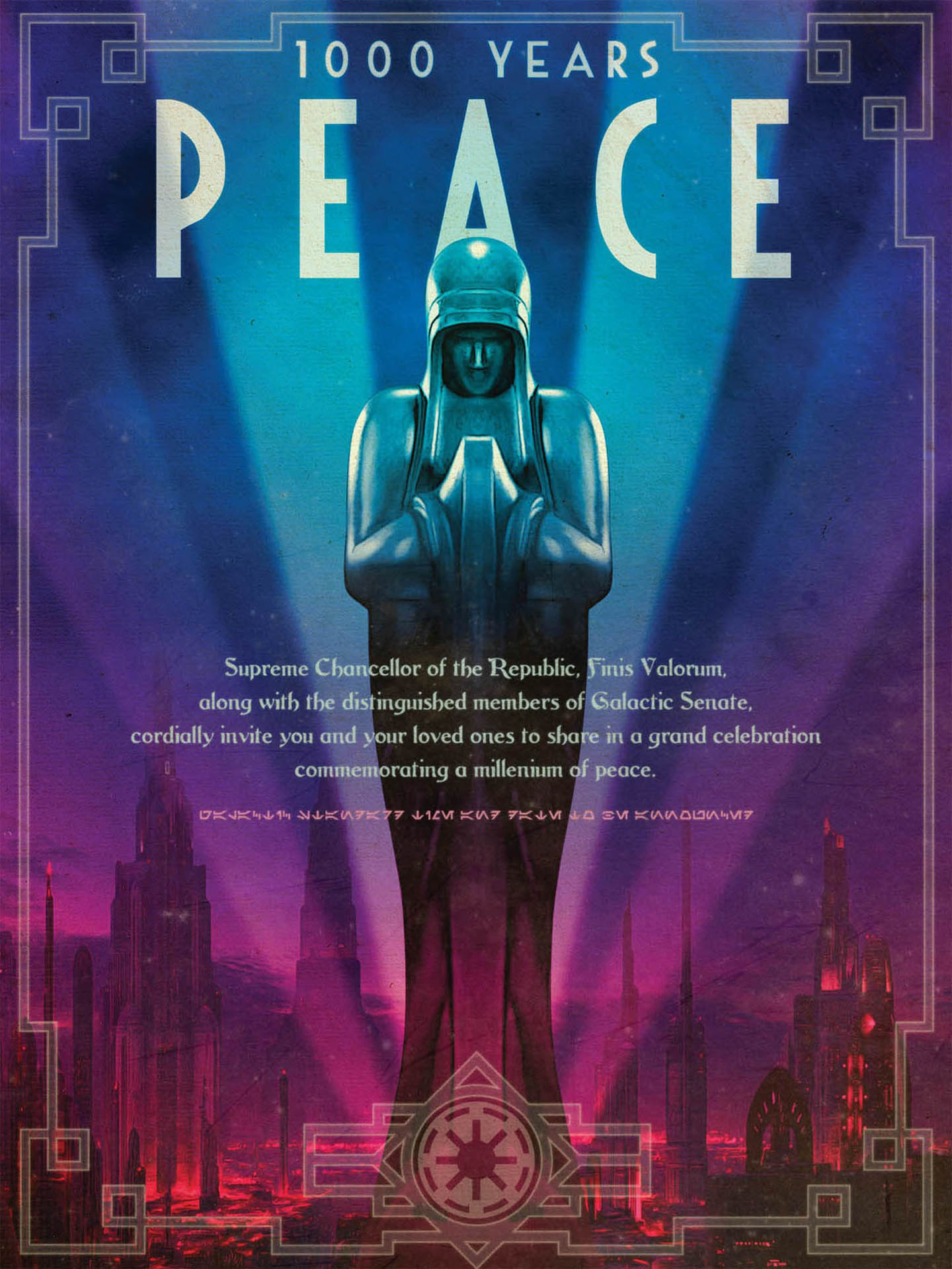
The Galactic Senate and the Jedi Order presided over an era of peace within the Old Republic.
For millennia, the galaxy had been governed by the Galactic Republic, a democratic union of sovereign star systems. Centered on the capital world of Coruscant, the Republic was governed by the Galactic Senate, which in turn was led by an elected Supreme Chancellor. Under the protection of the Jedi Order, a religious order of peacekeeping knights who possessed the powers of the Force, the 'old' Republic experienced a millennium of peace and prosperity.
However, as time went on, the government of the Republic became bloated and corrupt. The Senate, filled with self-serving politicians, was unable to deal effectively with disputes that arose between the member worlds of the Republic. With growing protest from the outer systems over one-sided trade deals and centuries of economic exploitation, a dispute over plasma exports and the taxation of Free Trade Zones in the galaxy provoked the Trade Federation to invade the planet Naboo. Although the Jedi, with the assistance of the Naboo people and the Gungans, were able to end the occupation, then senator of Naboo Sheev Palpatine took advantage of the conflict, which he had secretly organized, leading to his successful election as Supreme Chancellor.
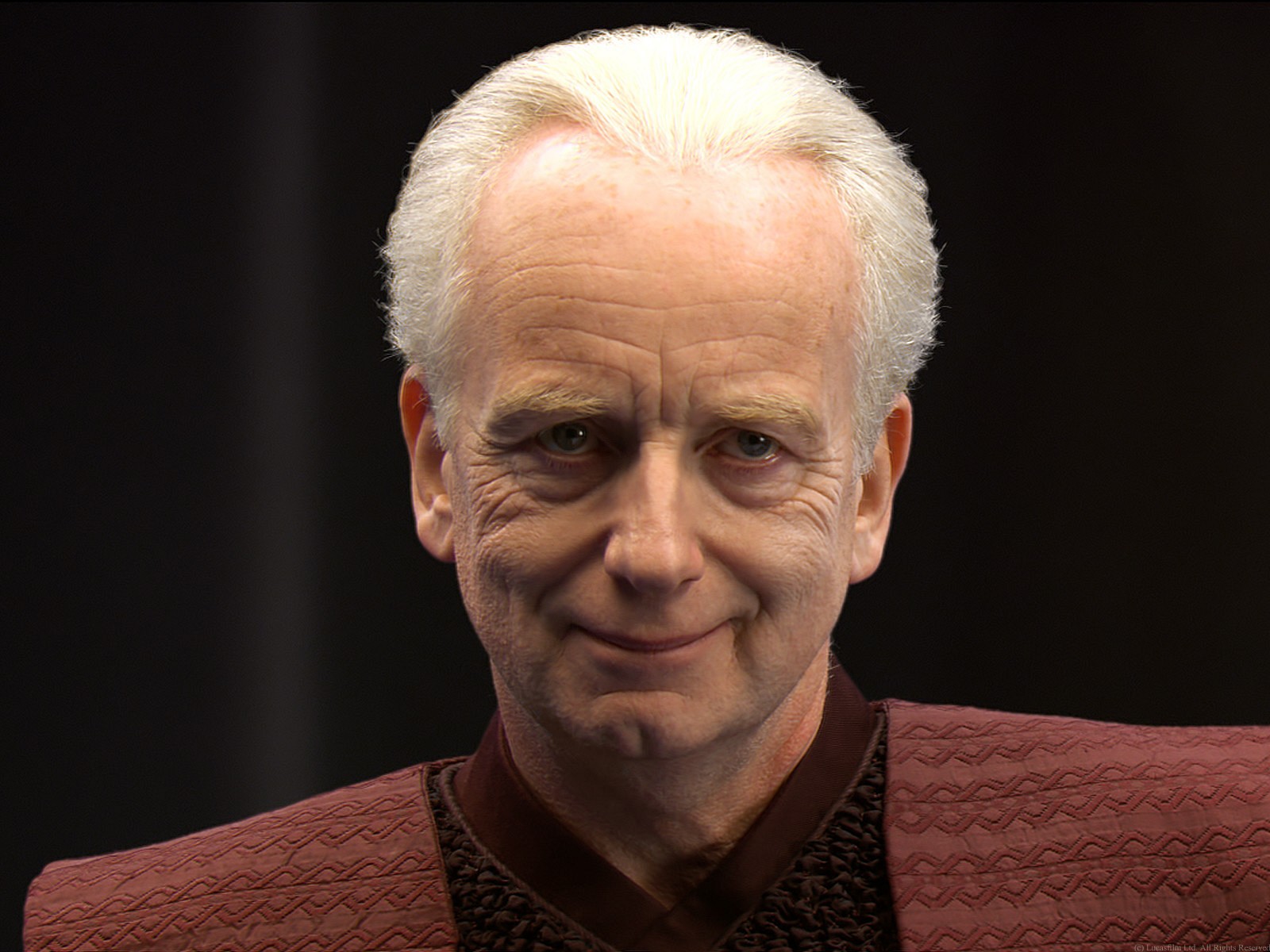
The Sith Lord Darth Sidious gained control over the Republic as Supreme Chancellor Sheev Palpatine.
In secret, Palpatine was Darth Sidious, a Dark Lord of the Sith, whose order, the Sith, was thought to be extinct, and he sought to restore the Sith Empire. The Sith took advantage of the corruption in the Republic and fomented a Separatist movement, during which time thousands of disaffected worlds seceded from the union. These Separatists were rallied together into the Confederacy of Independent Systems by Count Dooku, who was secretly colluding with Sidious and had become his Sith apprentice, Darth Tyranus. The Sith were thus able to play both sides and manipulate galactic events toward their advantage. The Jedi eventually discovered a Separatist Droid Army on Geonosis, bankrolled by powerful corporate groups, as well as a clone army on Kamino for the Republic commissioned secretly by the Sith. This eventually led to the outbreak of the first galactic war in over a thousand years, the Clone Wars. Palpatine used the conflict to increase the authority of his executive office, amassing more emergency powers from the Senate and amending the Galactic Constitution.

Senator Mon Mothma and her allies formed the Delegation of 2,000 to oppose the accumulation of power by Chancellor Palpatine.
As the Clone Wars drew to a close, a group of two thousand concerned senators formed the Delegation of 2,000. They created the Petition of 2,000, which identified the entire membership of the group, formally protested Palpatine's actions, and demanded he return the emergency powers he had claimed from the Senate following the conclusion of the war. However, when the Jedi discovered Palpatine's identity as a Sith Lord, and that he was not going to give back his power, a group of Jedi attempted to arrest Palpatine. They failed following the intervention of Jedi Knight Anakin Skywalker, who joined Sidious and became his new apprentice, Darth Vader. Sidious then issued Order 66, which forced the clone troopers to execute their Jedi Generals via pre-installed biochips, while Vader led the siege of the Jedi Temple. Palpatine then called together the Senate in an emergency session of Congress, where he denounced the attempt to arrest him as a Jedi rebellion. He then declared that the Republic would be reorganized into the first Galactic Empire (fall of the Old Republic), and proclaimed himself Emperor for life with the backing of the new Imperial Senate.
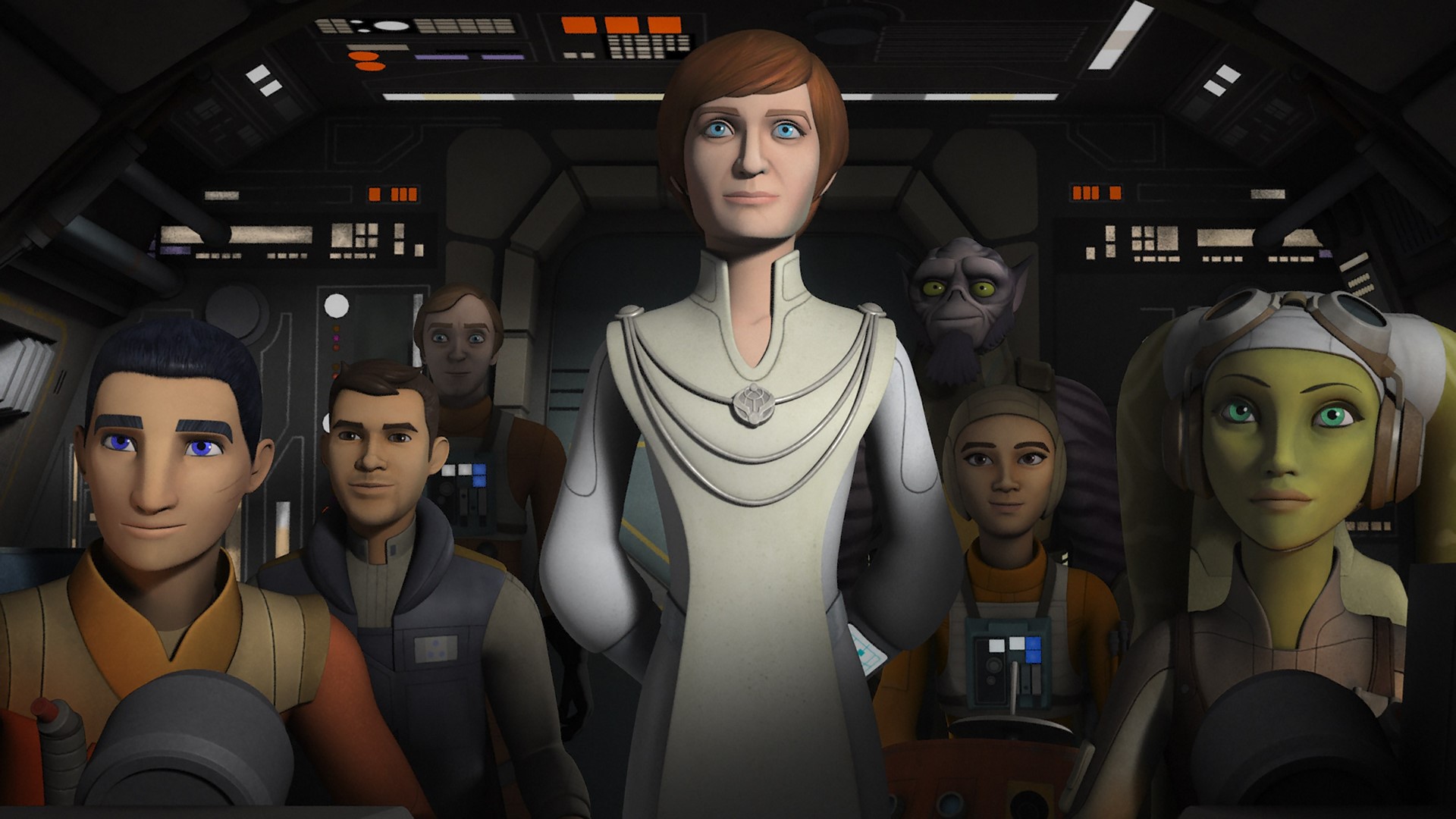
The Alliance to Restore the Republic was formed by various rebel cells that opposed the rule of the Galactic Empire.
Local resistance groups emerged on a number of worlds as the Empire tightened its grip on the galaxy, which eventually led to the outbreak of the Galactic Civil War. In time, under the leadership of Senators Mon Mothma and Bail Organa, these local groups were organized into rebel cells that gradually coalesced into the full-blown Alliance to Restore the Republic. These resistance fighters resolved to overthrow the Emperor and restore the Republic.
In 0 BBY, the Emperor disbanded the Imperial Senate, the last remnant of the Old Republic, as the Empire unveiled the planet-destroying Death Star. However, the Rebel Alliance destroyed the battle station at the Battle of Yavin. Despite an ensuing four years of setbacks, in 4 ABY, the Rebel Alliance attacked the Empire again at the decisive Battle of Endor. During the battle, Darth Vader sacrificed himself to kill the Emperor in order to save his son, Jedi Knight Luke Skywalker, rendering the Sith extinct, while the Rebel Alliance successfully destroyed the second Death Star. Retreating to the Annaj system, the Imperial fleet had suffered a crippling defeat as the Empire began to crumble.

The Rebel Alliance became the New Republic after winning the Battle of Endor.
Owing to their success in the Battle of Endor, the Rebel Alliance began to reorganize into a fledgling new government known as the New Republic. The Alliance pressed its advantage against the Empire by pursuing shattered Imperial forces throughout the galaxy, hoping to prevent them from regrouping into a larger foe once more. Though many celebrated the death of the Empire's dictatorial ruler, including a riot in Monument Plaza, the Empire still initially maintained military superiority over the fledgling Rebellion. Seeking to prevent the disheartened Imperial forces from reorganizing, the Alliance embarked on campaigns such as the Beltire Liberation and Battle of Cawa City, with both operations seeing the Alliance victories and Imperial blunders. Twenty days after the Battle of Endor, Princess Leia Organa of Alderaan, who had been sent by Mon Mothma, Chancellor of the Alliance, visited the Queen of Naboo, Sosha Soruna. In the royal palace's throne room, Organa asked for Naboo's support in the establishment of a New Republic and the restoration of the senate. The queen accepted Organa's offer, claiming that the Naboo felt great shame over Palpatine's actions.
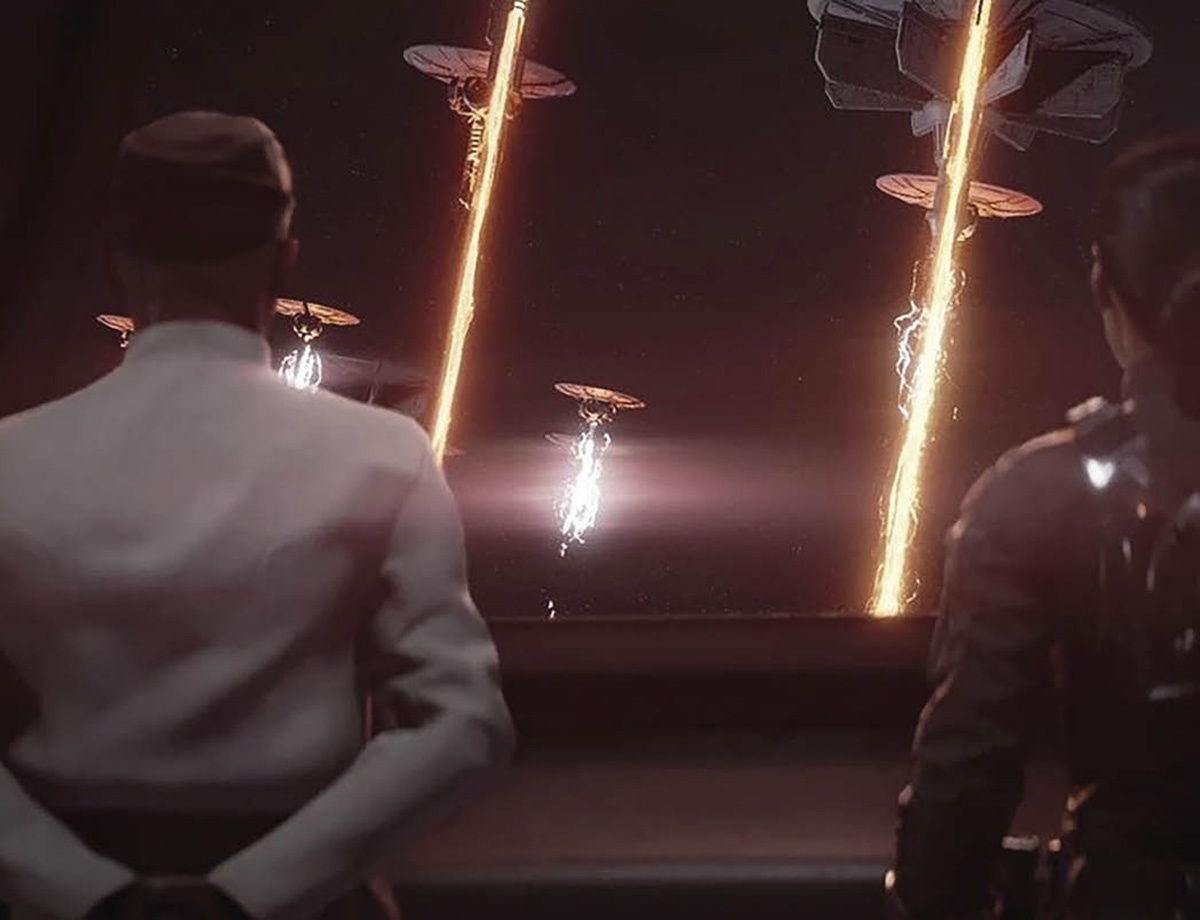
The Empire carried out Operation: Cinder in accordance with Emperor Palpatine's posthumous instructions.
Although the Empire attempted to destroy Naboo and a variety of other worlds such as Burnin Konn, Candovant, Abednedo, and Commenor using climate disruption arrays during Palpatine's posthumous contingency plan Operation: Cinder, the plan was ultimately foiled by Alliance forces. During the subsequent Invasions of Naboo, with Imperials who sought to claim Naboo as a rallying point around their defeated leader's former homeworld, the New Republic continued to successfully defend the planet, its efforts there led by Thane Kyrell and Corona Squadron, along with several Imperial deserters who informed the Republic of Imperial strategy. As chaos and hope slowly gripped the galaxy, Imperial propaganda soon began touting several contradictory messages, with some claiming that the Emperor lived on, or that the so-called New Republic slowly plundered innocent star systems for its terrorist organization, while others feared legitimizing it by referring to it as anything other than a criminal organization. Governor Ubrik Adelhard locked down all communication and travel from the Anoat sector, hunting down any that spoke word of the Emperor's death with his Purge Troopers. Nonetheless, New Republic forces quickly began to swell as propaganda broadcasts featuring the destruction of the second Death Star rallied thousands of individuals to take up arms against the Empire.
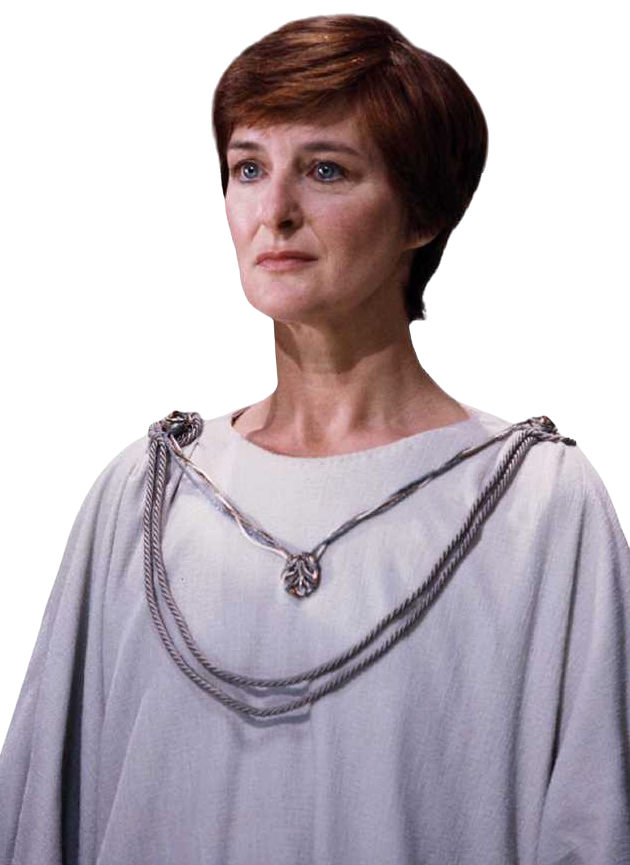
Mon Mothma continued to lead the Rebels as the first Chancellor of the New Republic.
Officially founded a year after the Battle of Endor, the New Republic and its fledgling government soon chose Chandrila as their capital, while the Galactic Senate was re-established and its newly seated members elected Mon Mothma as the Chancellor. Chancellor Mon Mothma, former leader of the Alliance to Restore the Republic knew that a unified, singular message would be required to win the hearts and minds of civilians across the galaxy. Making clear that her new position was merely provisional, Republic communications bureaus worked around the chrono, crafting inspiration messages of hope, rebirth, empowerment, and self-determination. The Empire soon installed an actor to play the role of Palpatine, however, some were able to see through the facsimile. Inevitably, the truth of the Emperor's demise became known to the general citizenry, while ambitious men announced their ascension to the Imperial throne almost every day. In reality, Grand Vizier Mas Amedda, the former aide to the Emperor who had served him since the Clone Wars would hold all the real power, and embark on the impossible task of maintaining the administrative and military functions of the Empire.
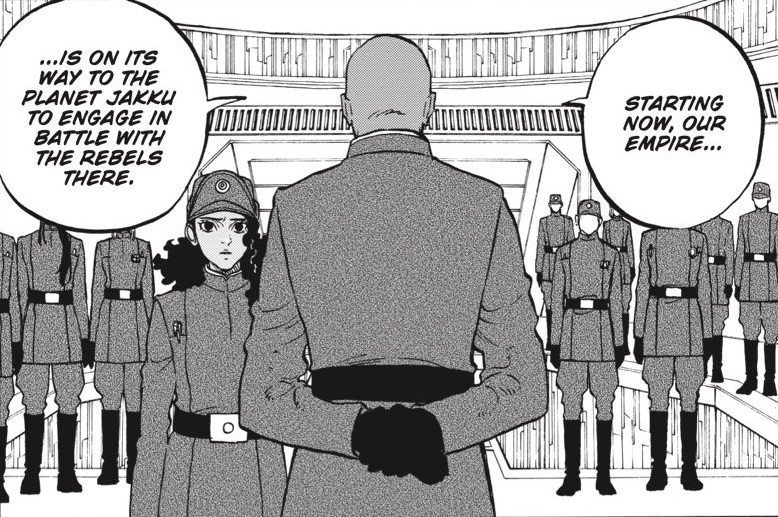
The Galactic Civil War continued as the Empire maintained its war effort despite the momentum of the New Republic.
While the New Republic appeared unstoppable following the destruction of the Death Star II, several Republic leaders, such as recently promoted Fleet Admiral Mon Calamari Gial Ackbar knew that the Alliance's victory at Endor was nothing more than pure luck. Despite major victories on Sevarcos and Malastare, along with foiling an attempt to restart the droid foundries on Geonosis by SpecForces, the Republic still feared what a unified, singular thrust against populated New Republic systems could spell for the movement. Luckily for the Republic, the Imperial leadership could barely contend with themselves let alone an external threat.
Ambitious members of the Imperial Council soon began carving up pieces of the Emperor's territories for themselves, while ambitious Moffs, such as Valco Pandion and Randd began a rapid process of self-promotion and aggrandizement. While the Imperial Military maintained a semblance of unity owing to old loyalists and a common fear of the Rebellion, a few senior Imperials counted the days until someone of prominence broke away from the fold, ushering in the true collapse of the Empire.
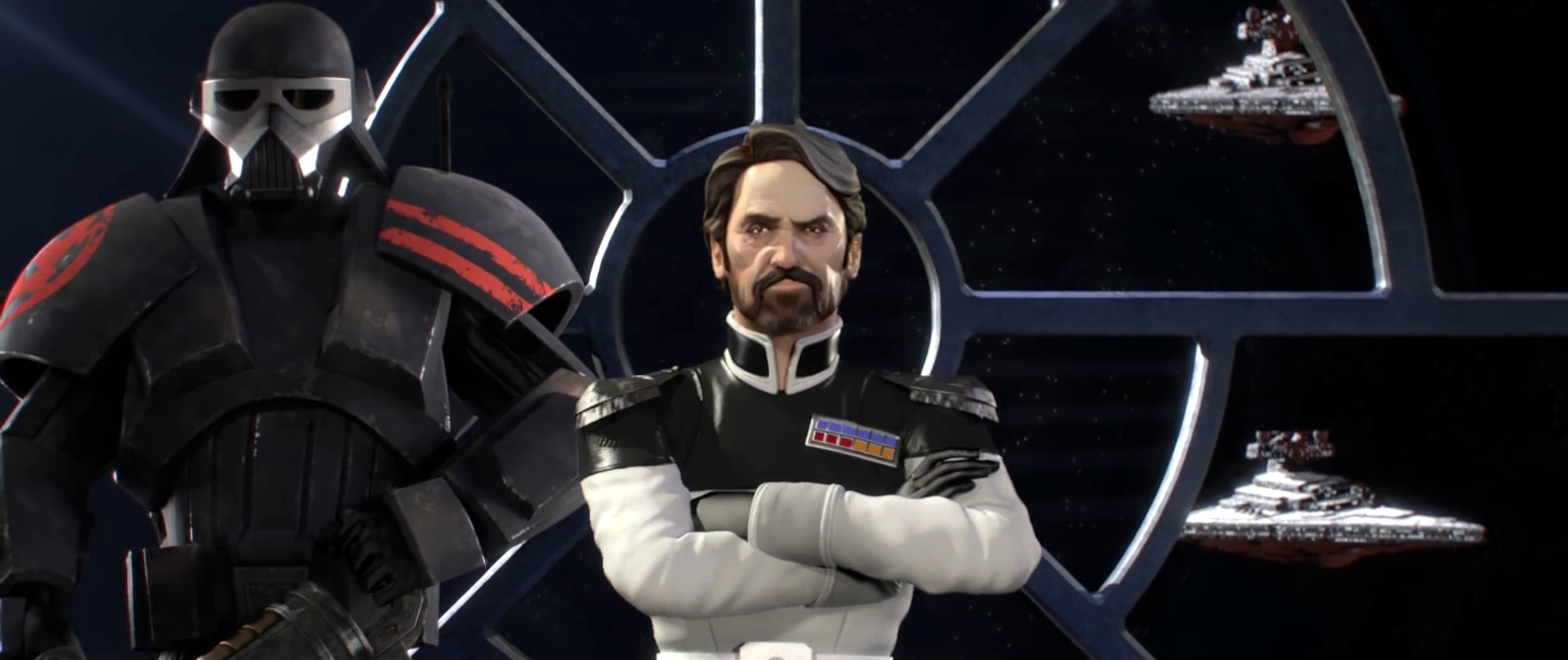
The Empire's unity gave way to the rise of Imperial remnants during the final year of the Galactic Civil War.
With numerous splinter fleets and factions of the Empire rising up, several of them retreated to worlds in the Outer Rim to escape the attention of the New Republic as it made inroads into the Outer Rim, gaining many victories, while strategically unimportant worlds such as Naalol would see heavy fighting in the months following the Emperor's death, with the Imperials using them as fallback positions as other worlds slowly eluded its grasp. To several Republic leaders, the shift of the Empire to worlds in the Outer Systems only made sense with the foreknowledge that many of the original seeds of the Empire originated there. Meanwhile the Iron blockade in the Anoat sector was into it first few months, forcing citizens of local worlds such as Burnin Konn to turn to crime bosses and the black market to obtain the food and supplies they needed to survive as the shortage was beginning to spark a substantial demand for smuggled goods.
Wedge Antilles, a New Republic starfighter pilot, eventually tracked a gathering of Imperial forces on the Outer Rim world of Akiva, but was captured by the Star Destroyer Vigilance before he could report to the New Republic, necessitating a mission to rescue him. In reality, the military build-up would be the result of Admiral Rae Sloane, who attempted to bring some of the last leaders of the Empire together in the Imperial Future Council, where they would discuss the Empire's long-term strategy and appoint a new Emperor. Before any progress could be made, the resulting Rebellion on Akiva which was inspired by Norra Wexley saw several key Imperial figures killed or captured, with the New Republic Defense Fleet interrupting the gathering owing to Imperial admiral Gallius Rax, who had been feeding the Republic information under the codename the "Operator."

Admiral Rae Sloane tried to stabilize the Empire's situation both internally and with regard to the New Republic.
The Operator had in fact been providing the New Republic with sensitive Imperial information for months following Endor, with the intentions of removing those he saw as weak from leadership positions to 'cleanse' the Order from the inside out. With the summit exposed, Admiral Sloane was forced to end the council dealings and the decision on a future Emperor was halted. But their escape plans were complicated by the destruction of their shuttles at the hands of Norra and was further complicated when Akivan protesters tried to storm the Satrapy of Myrra palace. Commander Kyrsta Agate would then arrive and would lead the Republic intervention force as the uprising against Imperial rule grew. With the eventual defeat of the Imperial fleet and garrison, the Satrapy of Myrra then capitulated and with Akiva becoming the first Outer Rim world to join the New Republic, dealt yet another major blow to the Empire.
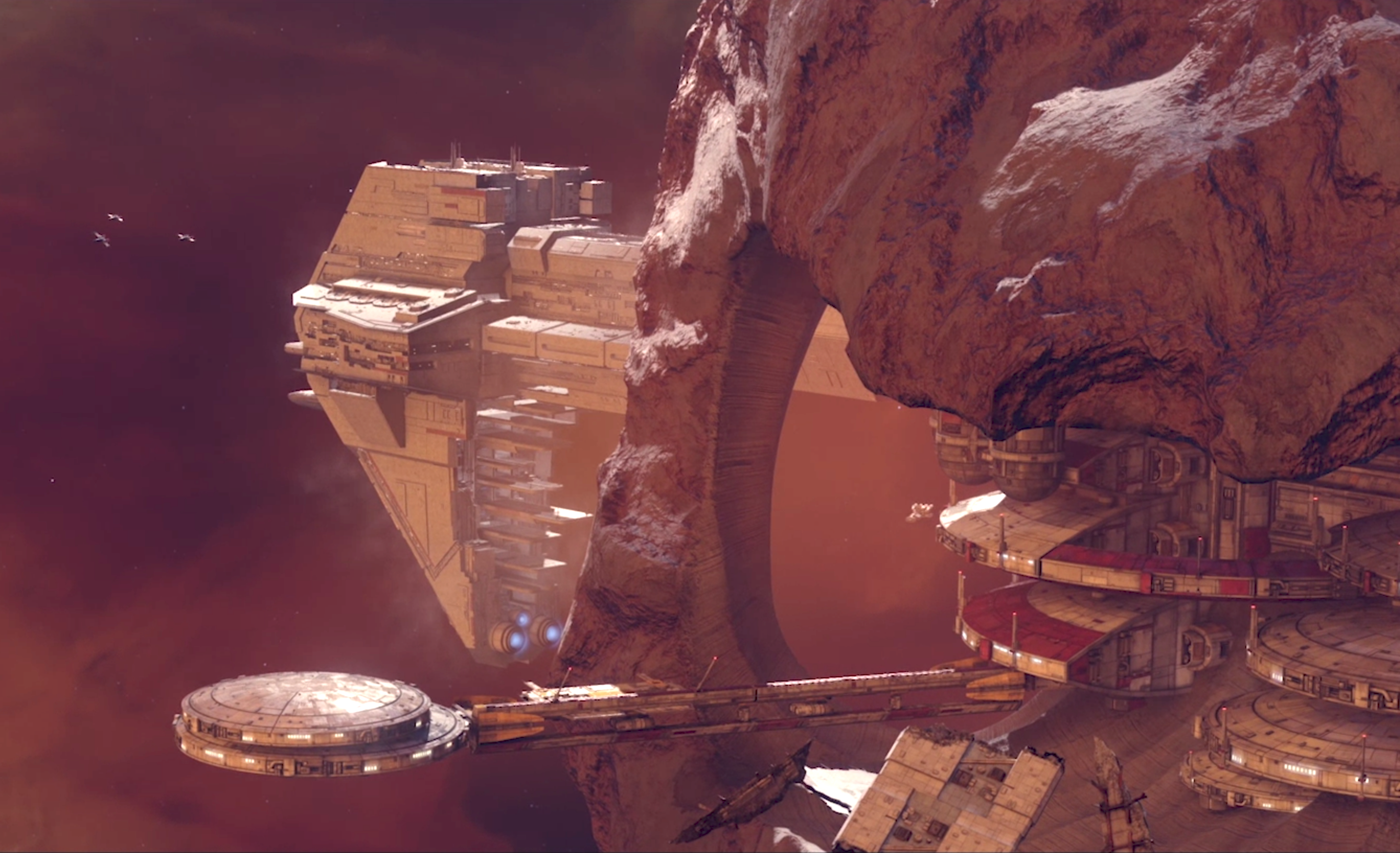
In the Nadiri Dockyards, the New Republic used captured Star Destroyers for Project Starhawk.
The New Republic turned resources towards Project Starhawk, an effort under the command of General Hera Syndulla to construct Starhawk-class battleships out of captured Imperial Star Destroyers. Based in the Nadiri Dockyards of the Bormea sector, rumors of the project spread throughout the fleet, and Vanguard Squadron was assigned to protect the construction. The first prototype under construction was known simply as the Starhawk. Around the same time, the New Republic's Orange Squadron was also active, patrolling the Mid Rim and helping to turn loyalists against the remnants of the Empire. Another fighter group was Pink Squadron, yet all records of their actions were either classified or redacted.
Among Vanguard Squadron's first actions for Project Starhawk was assisting in the capture of the destroyer Victorum in order to use it for the program. Nevertheless, the Empire also came to hear of the project, so Admiral Sloane tasked Captain Terisa Kerrill—who had known Vanguard Squadron officer Lindon Javes before his defection from the Empire—and her Star Destroyer, the Overseer, to deal with it. The Imperial fleet battled Vanguard Squadron for control over the captured Victorum, yet Kerrill's fleet was held off. Following the Imperial Titan Squadron's mission to Hosnian Prime, Kerrill's forces managed to secure the sector coordinates for Project Starhawk during a battle above Desevro.
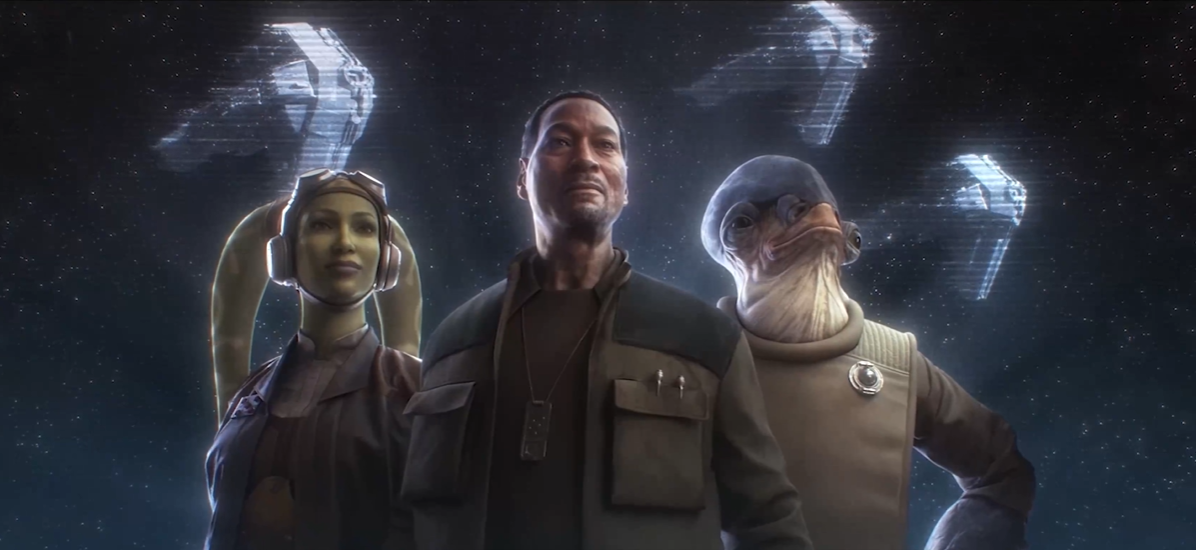
Even though the Starhawk was lost, the project was able to continue.
In order to stall the Imperial search for their project, the New Republic attacked and destroyed an Imperial listening post over the planet Esseles, and the Starhawk was deployed to battle against the Overseer in the Zavian Abyss, where the prototype successfully damaged the Star Destroyer. In the aftermath of several other battles, however, the Overseer attacked the Nadiri Dockyards and crippled the Starhawk. The Starhawk was soon destroyed in the battle of Galitan, but the New Republic's fleet managed to evacuate the program's engineers. Thus, Project Starhawk was able to continue, enabling the Republic to begin making a fleet of the ships.
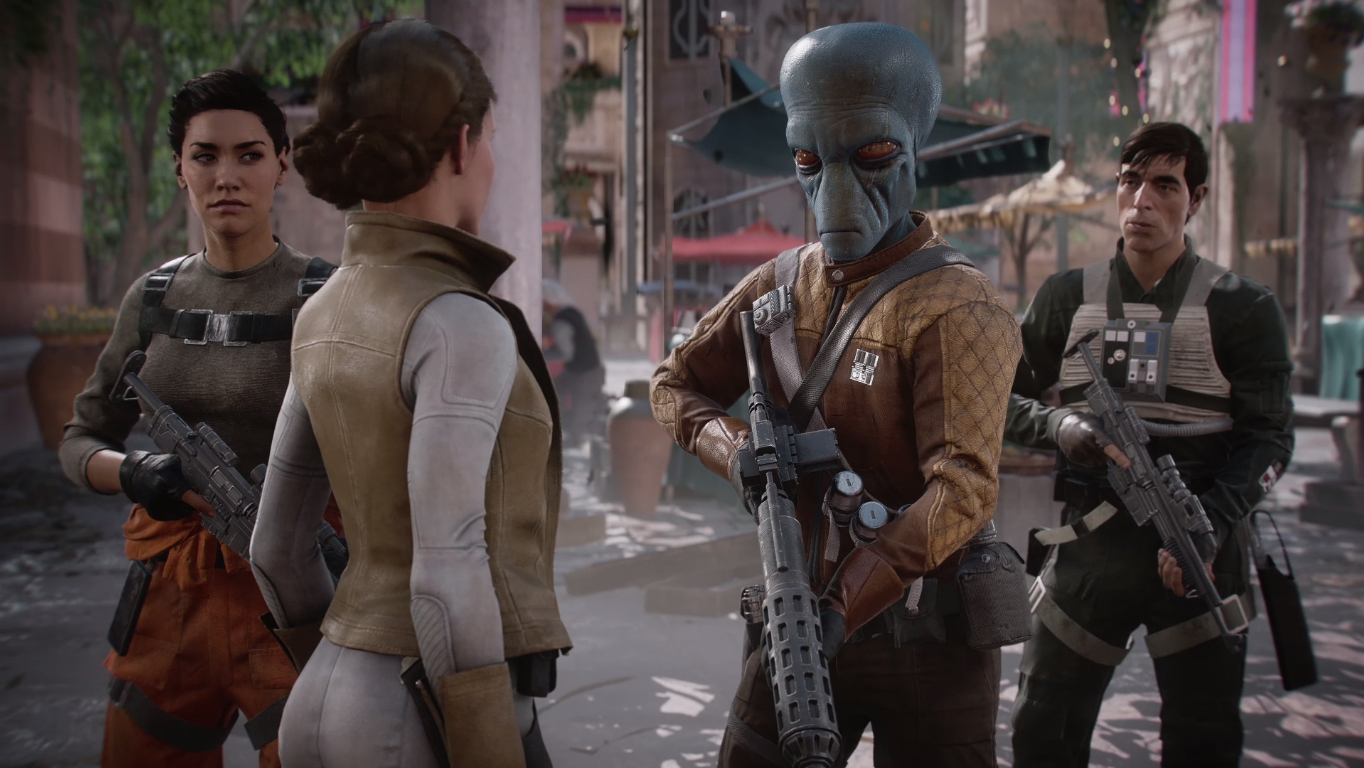
Members of Inferno Squad defected to the New Republic, having refused to participate in Operation: Cinder.
Several months after the Battle at Naboo, General Han Solo went to Takodana to seek out an Imperial defector Ralsius Paldora, who knew where the data cubes were stored in the nearby forest that contained information crucial to both the Republic and to help free Kashyyyk. However, a skirmish broke out when the Imperial Military discovered his treachery and interdicted the general, however, Inferno Squad's arrival allowed Solo and Paldora to escape with the intelligence.
Following the victory on Akiva, Princess Leia Organa persistently lobbied the new Galactic Senate on the matter of liberating the Wookiee homeworld of Kashyyyk from Imperial occupation. Her husband, Han Solo's Wookiee co-pilot Chewbacca came from Kashyyyk and Solo wanted to return a favor to Chewbacca, who owed him a life debt. The planet was governed by Grand Moff Lozen Tolruck, who had turned Kashyyyk into a planetwide slave labor camp and fitted every Wookiee on the planet with inhibitor chips. The Wookiees were exploited as disposable slave labor by the Empire and endured brutal conditions. However, the Republic was preoccupied with its military offensive against the remnants of the Empire.

Han Solo resigned from the New Republic military to liberate Chewbacca's homeworld of Kashyyyk.
In frustration, Solo resigned his commission as a general and embarked on a hastily-scrambled campaign with Chewbacca to liberate the Wookiee homeworld. Despite rallying Wookiee smugglers and refugees at Warrin Station, the initial campaign failed due to an Imperial trap. Solo managed to escape, but Chewbacca was captured by the Empire and imprisoned at the bleak automated prison of Ashmead's Lock on Kashyyyk. After losing contact with her husband, Organa turned to the New Republic officer Norra Wexley and her team for help in rescuing her husband. Norra and her team which included her son Temmin Wexley, his B1-series battle droid Mister Bones, the former Imperial loyalty officer Sinjir Rath Velus, the Zabrak bounty hunter Jas Emari, and Republic soldier Jom Barell had been participating in a campaign to hunt down Imperial war criminals including Vice Admiral Perwin Gedde.
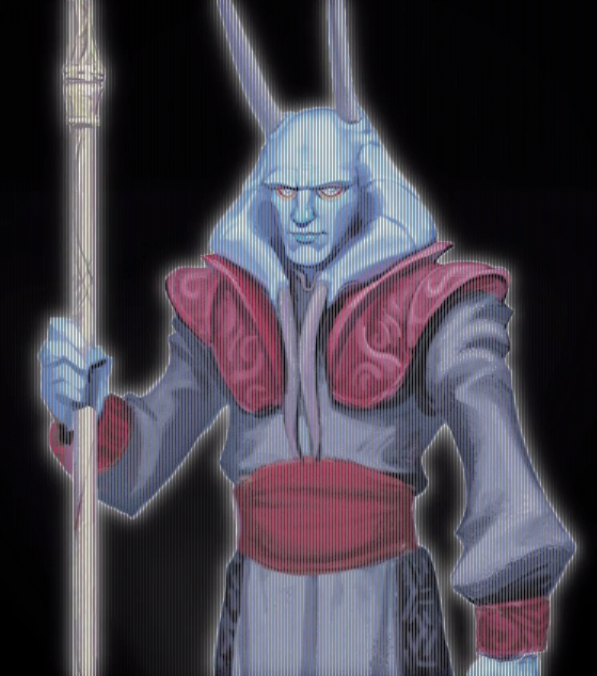
Grand Vizier Mas Amedda tried to negotiate an end to the war in exchange for clemency.
Meanwhile, New Republic forces took more former Imperial worlds including Arkanis, Kuat, and clashed with Imperial forces on Nag Ubdur. With the relaxation of censorship, HoloNet networks such as Queen of the Core Network freely reported on the New Republic's war efforts and Imperial atrocities and suicide attacks. While the Imperial capital Coruscant fell a true state of civil war, with some sectors remaining free from Imperial control and Rebel resistance fighters entrenching themselves with Rebel resistance fighters.
Meanwhile, other loyal sectors actively fought against the rebels. Grand Vizier Mas Amedda took control of Imperial forces on Coruscant with the Imperial Security Bureau coordinate the planetary forces. In the face of the Republic's military advances and growing internal unrest, Vizier Amedda secretly met with Chancellor Mothma and Senator Organa of the Alderaan sector on the watery planet of Velusia to offer his surrender. However, the Republic leadership rejected his surrender and ordered him to find a way for the Empire to surrender.

Norra Wexley was tasked with hunting Imperial war criminals until she resigned her commission.
In response, Fleet Admiral Gallius Rax established a Shadow Council consisting of Grand Admiral Sloane, former Commandant Brendol Hux, Grand Moff Randd, General Hodnar Borrum, and Imperial propagandist Ferric Obdur to manage the dwindling remnants of the Empire. Rax mustered sizeable Imperial fleets in the Vulpinus Nebula, the Almagest, the Recluse's Nebula, the Queluhan Nebula, the Ro-Loo Triangle, and the Inamorata. He planned to launch a coordinated strike against the New Republic from the Imperial holdout worlds of Zhadalene, Korrus, and Belladoon in the Outer Rim. In the midst of the fighting, criminal elements like the pirate Eleodie Maracavanya took advantage of the lawlessness to expand their criminal enterprises. Answering Organa's call, Norra Wexley and her commander Wedge Antilles tracked Solo's last coordinates to the edge of Wild Space.
After being rescued from Imperial forces, Wexley resigned her commission in the New Republic Starfleet after Admiral Ackbar refused to sanction her mission to rescue Solo and ordered her to resume her hunt for Imperial war criminals. After Sinjir acquired information about Ashmead's Lock from the captive Yupe Tashu, Wexley and her team subsequently traveled to the Siniteen prison builder Golas Aram's redoubt on the planet Irudiru. After reuniting with Solo, the rebels joined forces to storm Aram's compound and force Aram to divulge information on Ashmead's Lock. Using this information, Wexley's team and Solo traveled to Kashyyyk where they managed to infiltrated the automated prison. After disabling the computer system SOL-GDA, the Rebels managed to free Chewbacca and a hundred other prisoners, including Norra's husband and Temmin's father, Brentin Lore Wexley.
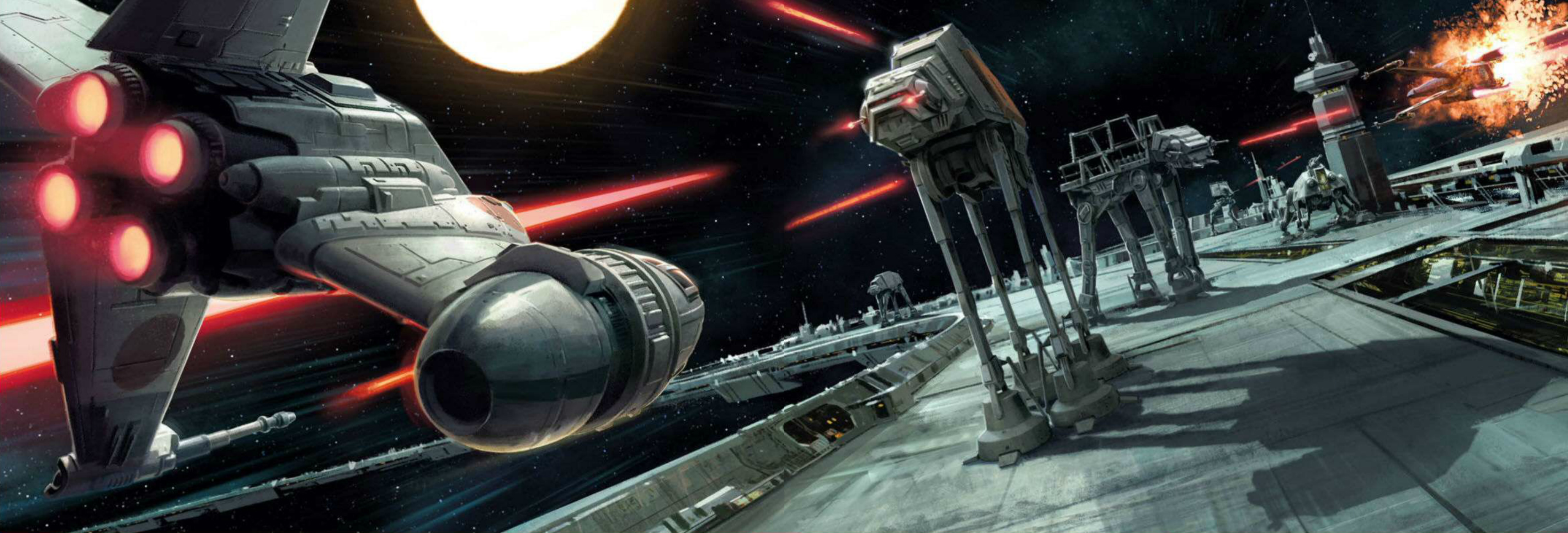
The New Republic gained control of Kuat's shipyards after wresting control of the planet from the Empire.
The Republic had also launched an assault on the Kuat shipyards utilized by Kuat Drive Yards where after weeks of fighting, the guild head and the sector governor Moff Pollus Maksim conceded to the Republic. Grand Admiral Sloane shortly after opened up peace talks at ending the war with Mothma agreeing to convene an emergency session of the Senate to discuss the Imperial offer. While Norra and Temmin flew the prisoners on the Millennium Falcon back to Chandrila, Solo, Chewbacca, Sinjir, Jas Emari, and Jom stayed behind to organize a campaign to end Imperial domination over the Wookiees of Kashyyyk. For the next month, Jas recruited several smugglers and Wookiee refugees including the former slave Greybok.
Solo and his team also searched for Grand Moff Tolruck's hidden island fortress, from where he presided over his slave empire. Meanwhile, Grand Admiral Sloane grew disillusioned with Fleet Admiral Rax's leadership and agenda. After uncovering information about his connection to the late Emperor and the planet Jakku, Sloane became privy to Rax's plan to launch an attack on Chandrila, the New Republic capital. To lull the New Republic into a sense of complacency, Sloane had already posed as the Operator and offered to enter into peace talks with Chancellor Mothma and Admiral Ackbar in the aftermath of the Empire defeat over Kuat. Believing that the Empire was near capitulation, the Senate had agreed to peace talks.
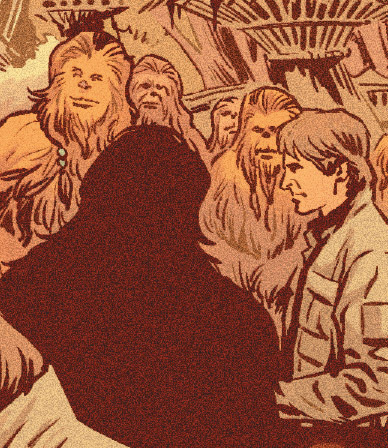
Solo and Chewbacca succeeded in ending the Imperial occupation of Kashyyyk.
Meanwhile, on Kashyyyk, Solo and Chewbacca's team managed to infiltrate Grand Moff Tolruck's island fortress and disable his inhibitor chips. This triggered a mass planetwide uprising which saw the rapid overthrow of the Imperial garrison on Kashyyyk. In desperation, Tolruck ordered the orbiting Imperial Star Destroyers to initiate orbital bombardment of Kashyyyk. However, Tolruck's order was intercepted by a New Republic probe droid which transmitted the footage to Leia, who alerted Wedge Antilles, Chancellor Mothma, and Admiral Ackbar. Han and his team also managed to hijack the Star Destroyer Dominion and destroy one of the other Destroyers. When Leia, Antilles, and Ackbar arrived with reinforcements, the remaining Imperial forces on Kashyyyk capitulated. The Wookiees regained control of their homeworld and began mopping up operations against the remaining Imperial holdouts on the planet.
The liberation of Kashyyyk was accompanied by the Empire's abandonment of its remaining garrisons on the Twi'lek homeworld of Ryloth, which was subsequently liberated by the Free Ryloth Movement. In Chandrila's capital Hanna City, Chancellor Mothma organized a celebration called Liberation Day to honor the Ashmead Lock's prisoners. This celebration coincided with Grand Admiral Sloane's arrival on Chandrila for the peace talks. Unknown to the New Republic, Fleet Admiral Rax had fitted the prisoners with inorganic biochips. After the Imperial agent Windom Traducier activated a transponder at the top of the Hanna City opera house, the liberated prisoners including Brentin involuntarily attacked several New Republic officials. Mon Mothma narrowly escaped assassination but numerous officials were maimed or murdered.
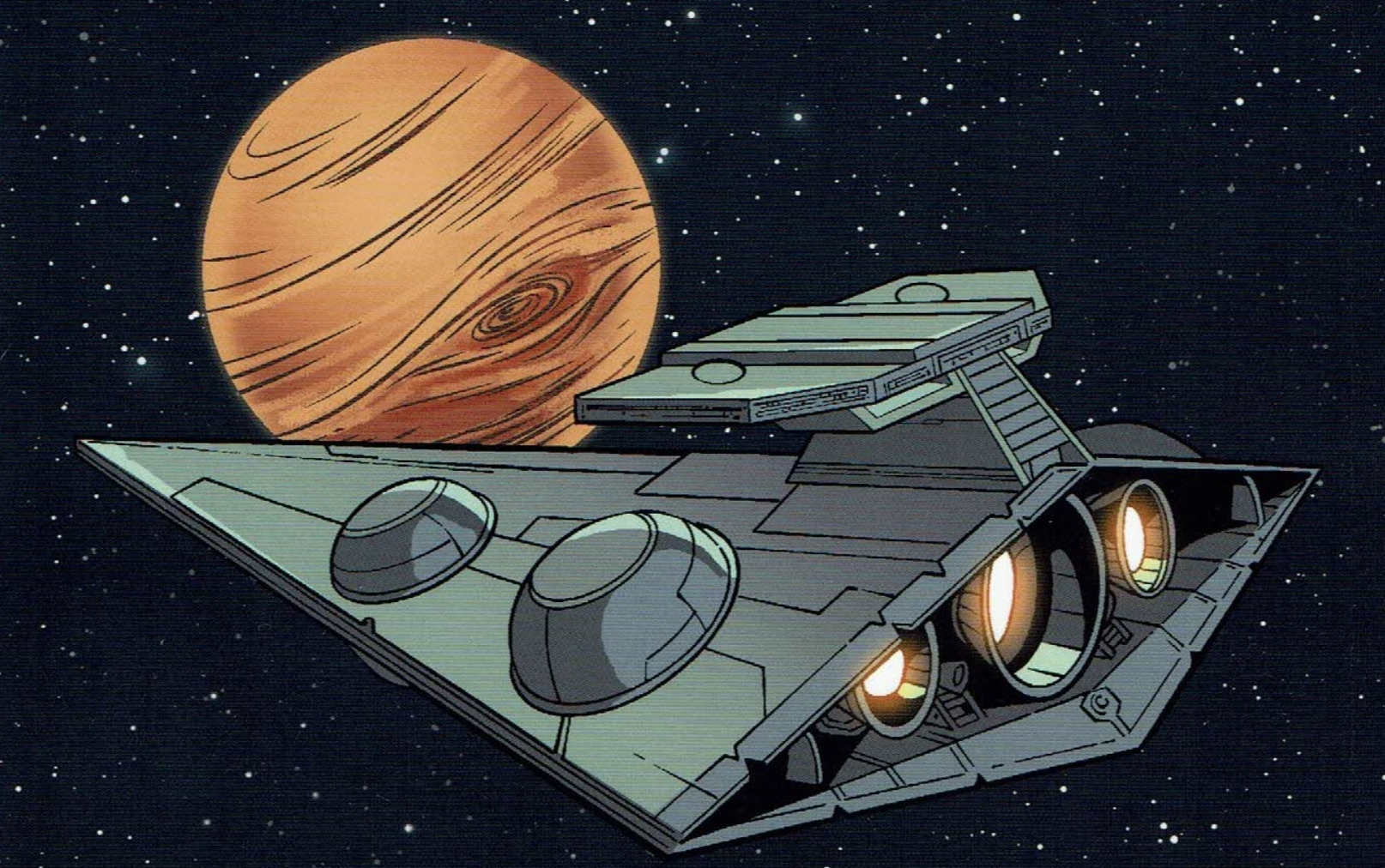
Fleet Admiral Gallius Rax rallied his forces to make the Empire's final stand against the New Republic at Jakku.
Disgusted with Rax's tactics, Sloane turned against Rax and narrowly escaped death at the hands of her aide Adea Rite, who was a secret agent of Rax. The attack on Chandrila had serious repercussions for the New Republic's public image since the violence had been broadcast live on HoloNet. Several systems that had been considering joining the Republic withdrew their applications. Some advocated moving the Republic's capital from Chandrila to a more secure system. Some proposed forming an alternate Independent Systems Alliance.
The New Republic also suspended hiring bounty hunters since soliciting their services made the Republic's security and military forces look weak. Following the Liberation Day attacks, Fleet Admiral Rax assumed control of the Shadow Council on the pretext of Sloane's alleged death. Appointing himself as Counselor to the Empire, Rax marshaled the Imperial armadas for a pitched battle against the New Republic on the barren Inner Rim world of Jakku. Meanwhile, the fugitive Sloane joined forces with Brentin to hunt down and kill Rax. As the New Republic prepared for a final showdown with the remnants of the Empire, Norra, her son, and their team decided to hunt down Sloane, believing that she was responsible for the attack on Chandrila.

The New Republic endeavored to end the war amidst internal division and the rise of new states in the galaxy.
In the months following the Imperial resurgence on Chandrila, the New Republic had to contend with new factions, including the New Separatist Union, the Confederacy of Corporate Systems, and the pirate state known as the Sovereign Latitudes of Maracavanya. Chancellor Mon Mothma also had to contend with a political rival in the form of Senator Tolwar Wartol, who accused her of being weak and advocated a stronger, more centralized, and militarized New Republic. These problems coincided with the New Republic's efforts to relocate its capital to the Mid Rim agrarian world of Nakadia. Chancellor Mothma apportioned resources and infrastructure for worlds devastated by the Empire during a meeting of the Committee for Imperial Reallocation, which was formed to deal with redistributing the resources of the Empire.
Growing weary, Mothma advocated ending the meeting early and delaying it until next month. Despite maintaining a strong military, Mothma made sure that it was not too powerful in an effort to differentiate her government from the Empire. During a secret gathering, Mothma pointed out the fact that Senator Organa had authorized Norra Wexley's team a mission to hunt for Rae Sloane was the jurisdiction of the Senate and responded that they had to be careful before proceeding to Jakku, she further explained that she was unable to authorize the deployment of military forces consulting the Senate. But Wartol, however, found out about the meeting and leaked the news to HoloNet News and took the opportunity to attack Chancellor for being secretive and indecisive.
Meanwhile, Wexley's team including her son Temmin managed to track down Sloane to Jakku. However, they found that the remnants of the Empire military had fled there. While Norra and the bounty hunter Jas Emari went to Jakku to search for Sloane, Temmin and Sinjir returned to Chandrila to warn the New Republic. Chancellor Mothma urged the Galactic Senate to vote for military intervention on Jakku. However, the bill fell short of a majority by five votes. Before a re-vote could take place, the New Republic began the process of relocating to Nakadia.
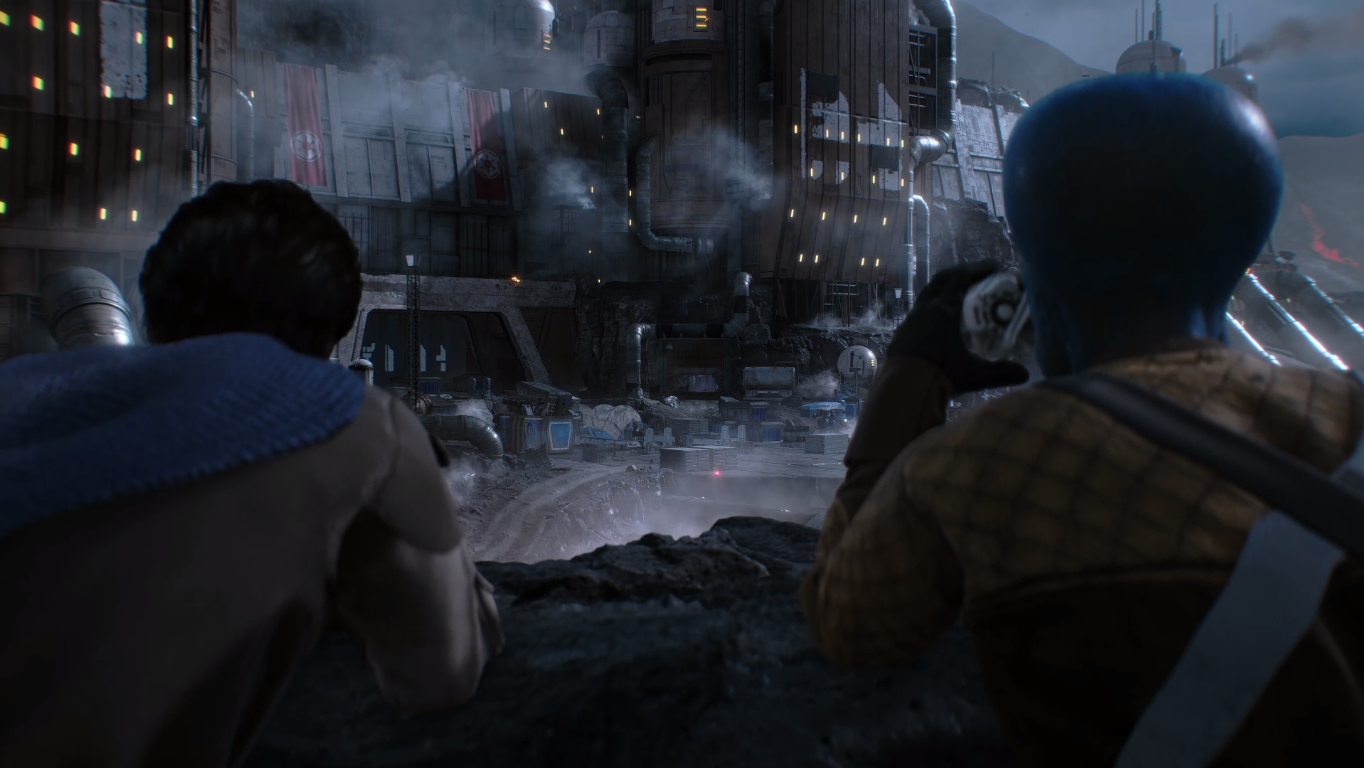
Lando Calrissian and Shriv Suurgav discovered that an Imperial weapons factory had been restored on Sullust.
Despite the instability, the war raged on with Inferno Squad heading to the Chinook Station on Bespin with the objective to find and capture Agent Gideon Hask after discovering from Ralsius Paldora that Admiral Garrick Versio's fleet had been refueling at Chinook for several months but failed to capture Hask but were able to shut down the operation. While General Lando Calrissian and Shriv Suurgav went to Sullust to recover the weapons in the depot for the Republic before the Empire could. However, the Empire had secretly restarted the weapons factory and Calrissian felt it was far better to destroy the depot to prevent the Empire from producing anymore weapons.
Mon Mothma meanwhile had delayed the re-vote by stalling Senator Tolwar Warto with an impromptu biosecurity inspection above Nakadia, Han Solo, along with Sinjir, Temmin, Jom Barell, and Conder Kyl, discovered that the five senators had been coerced by the Black Sun and Red Key crime syndicates into derailing the bill in order to prolong the Galactic Civil War. The chancellor was able to escape an assassination attempt by senator Wartol. After rescuing Senator Nim Tar's child, Sinjir managed to rectify the situation by offering to pardon the senators if they supported Mothma's bill during the re-vote. As a result, Chancellor Mothma managed to pass a bill sending the New Republic military to Jakku. Following the death of her adviser Auxi Kray Korbin, Sinjir and Sondiv Sella were appointed as Mothma's new advisers.
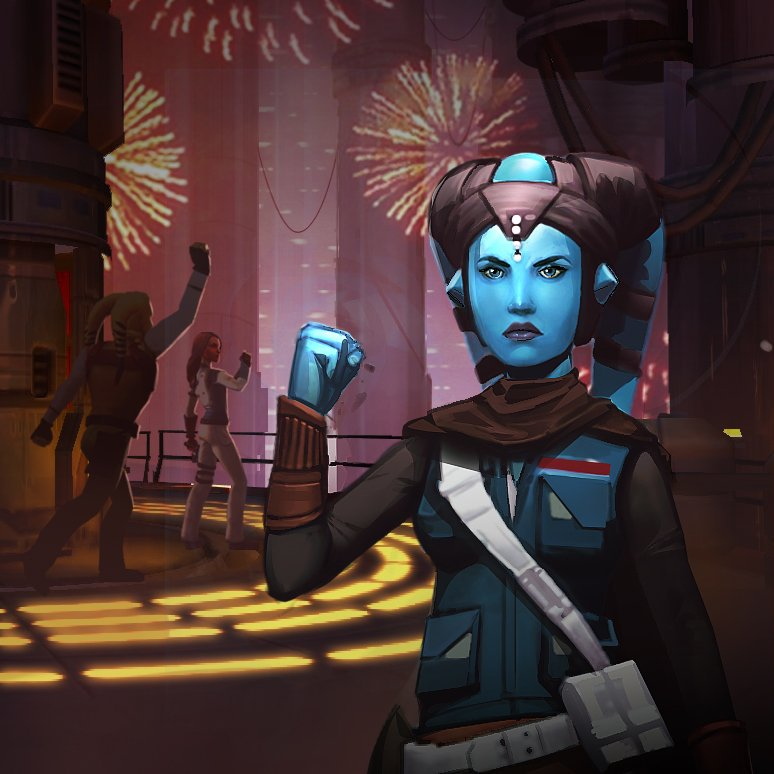
The Empire lost control of Cloud City to the New Republic and its allies.
On Bespin, Adelhard had escaped with his forces having mostly crumbled under General Calrissian's campaign who had led a joint task force of both Bespin Wing Guards and New Republic soldiers as they led the effort to clear out the remaining holdouts in Cloud City after the Liberation of Cloud City. Wing Guard Captain Gladstone informed him that the Imperials were holed up inside in the Casino level, Calrissian managed to convince a dozen Imperials holed up to surrender by telling them that Adelhard's story about Palpatine was false and offered to spare their lives, give them food and allow them to depart Cloud City, but a sergeant tried to kill Calrissian but he managed to kill the sergeant, ending the war on Bespin.
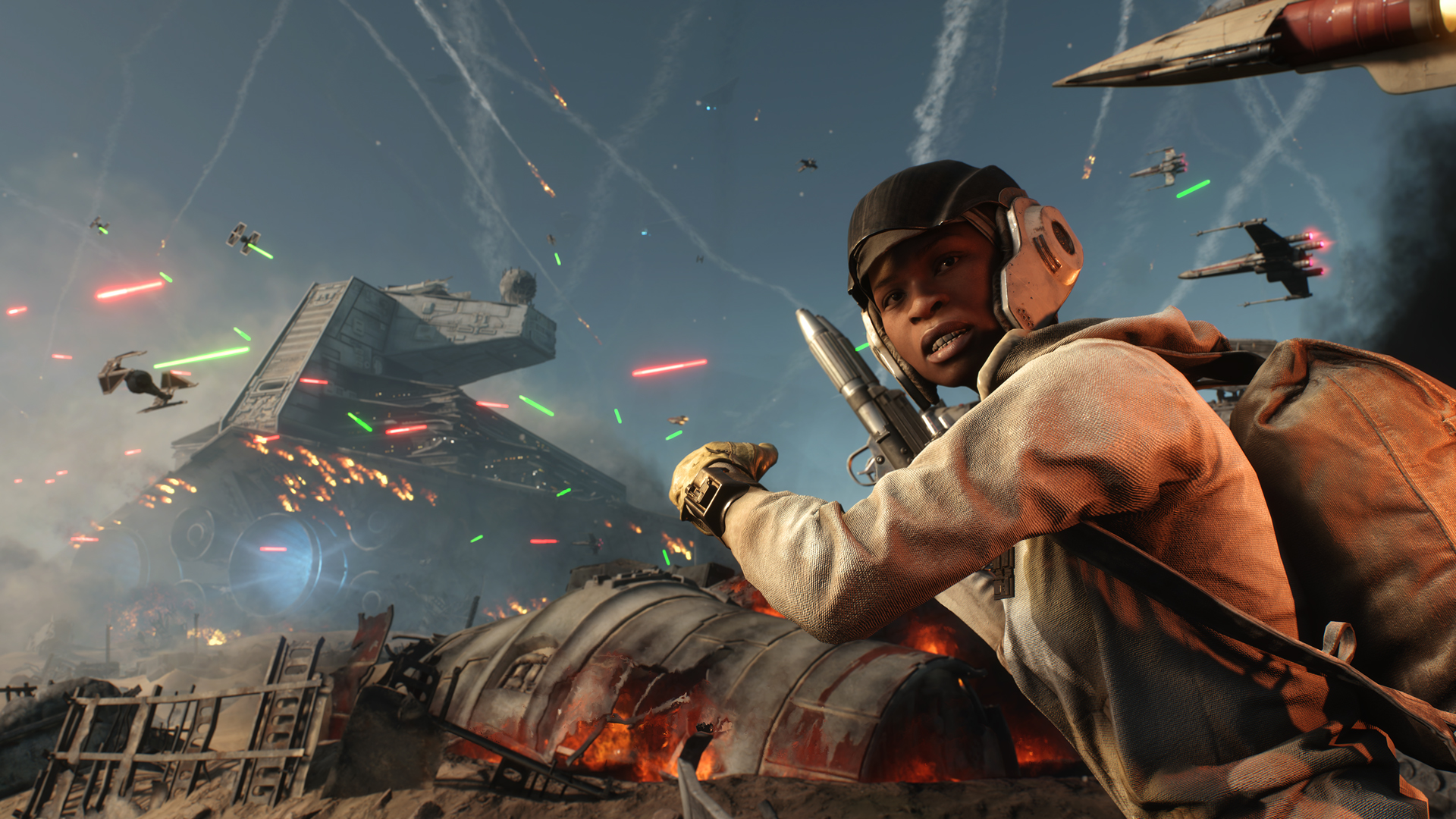
The Battle of Jakku was the final large-scale battle of the Galactic Civil War.
Following the vote, Battle of Jakku commenced with Admiral Ackbar leading the New Republic fleet to the desolate stronghold of the Empire. Ground forces led by Lieutenant General Brockway were also deployed to attack Rax's main Imperial base and a weapons facility. Despite outnumbering the Empire, the New Republic fleet was unable to break through the Imperial defensive lines. Fearing that Jakku could be a ruse, the Republic decided to kept a force led by General Tyben on Chandrila and the new galactic capital of Nakadia, who would be kept up to date on the progress of the battle with Admiral Ackbar via hologram.
Unknown to the New Republic, Counselor Rax had engineered the battle as a means of destroying both the Galactic Empire and the New Republic forces as part of the Emperor's Contingency and Rax own version for a renewed Empire. The late Palpatine did not want the Empire to survive his death and tasked Rax with executing his will. As part of the Contingency plan, Rax planned to blow up Jakku itself and the two belligerent forces along with it.
Inferno Squad, led by Iden Versio, assisted with the planetside operations. Seeing an opportunity to save her father, Iden crashed her X-Wing onto the hull of the Eviscerator, almost falling to her death in the process. Iden pleaded with her father to come with her, but Garrick refused, urging Iden to survive. Parting with her father on good terms, Iden managed to reach an escape pod before the ship crashed into the planet below.
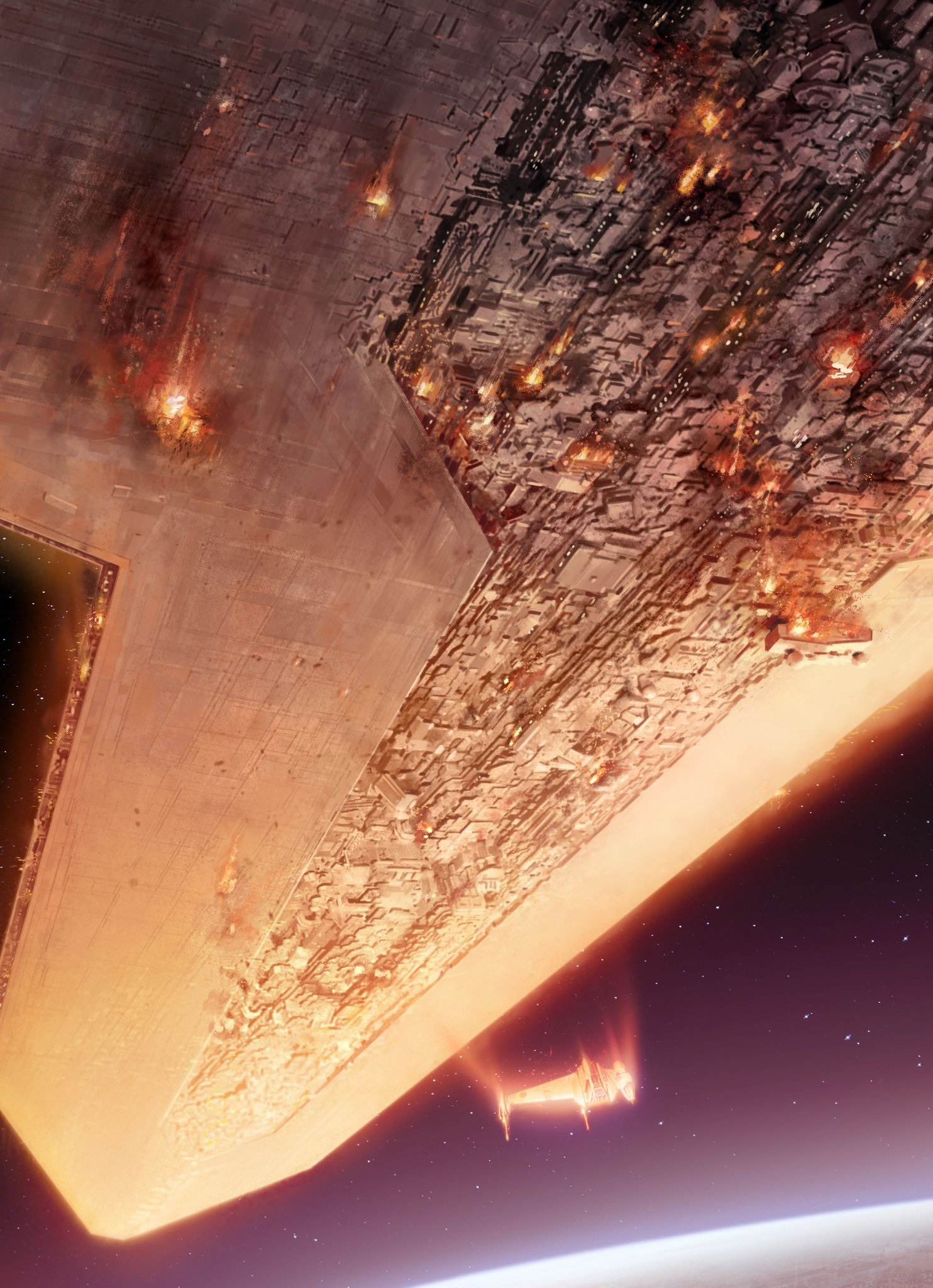
The Ravager's destruction turned the tide of battle in the New Republic's favor.
Due to Rax's fierce and unconventional tactics, the Battle of Jakku initially went in the Imperial remnants' favor. The Imperial fleet formed a defensive cordon around the Super Star Destroyer Ravager, which blunted the New Republic assault. The Imperial formation was broken when the Star Destroyer Punishment rammed the New Republic Starhawk-class battleship Amity. This created a gap which allowed Commodore Kyrsta Agate's warship Concord to attack the Ravager. Despite being crippled, the Concord managed to drag the Ravager to Jakku's surface; turning the tide of the battle.
New Republic forces then attacked the Imperial remnants on multiple fronts on space and land. New Republic boarders including the former TIE fighter pilot Thane Kyrell also tried to capture several Star Destroyers including the Inflictor. Due to the fierce fighting, Jakku's surface was littered with the wreckage of starships and other vehicles for decades to come, including those of the Inflictor itself. Meanwhile, Sloane joined forces with Norra and Brentin Lore Wexley to kill Rax and stop his plot to destroy Jakku. Sloane along with the former Commandant Brendol Hux and his son, Armitage then fled into the Unknown Regions.
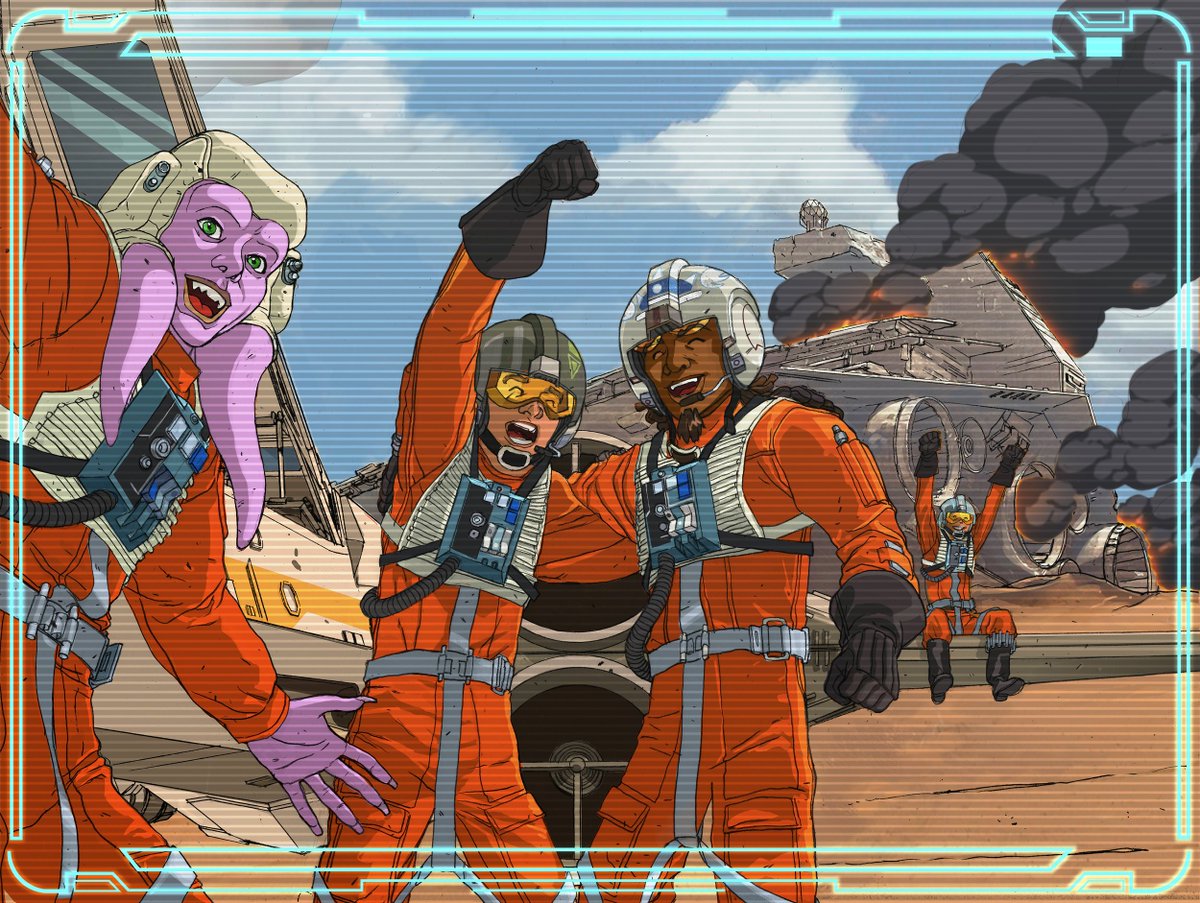
The Galactic Empire capitulated to the New Republic after losing the Battle of Jakku.
As the Battle of Jakku drew to a close, Grand Vizier Amedda emerged from hiding and announced his intention to call for a cease-fire between the Galactic Empire and New Republic. Chancellor Mothma and Grand Vizier Amedda signed the Imperial Instruments of Surrender and the Galactic Concordance on the formal Republic capital Chandrila; Mothma was accompanied by Princess Leia Organa, and her advisers, Sinjir and Sondiv Sella, when she ordered the Empire to surrender. The concordance imposed strict rules on the remnants of the Empire by the Republic who imposed harsh reparations and terms such as the abandonment of the Imperial Academies and the surrender of Coruscant to the New Republic.
Mothma also signed a further declaration classifying all surviving Imperial officers who did not adhere to the terms of surrender as war criminals. However, non-combatant functionaries including Amedda were granted conditional pardons. The Imperial remnants were to also to accede to the demands of the concordance and surrender Coruscant to the New Republic. Despite the concordance, fighting on Jakku's surface continued for several months. In addition, several Imperial remnants who disagreed or refused to acknowledge the former Empire decision to end the war, whom continued to resist the New Republic. As a result, the New Republic Starfleet remained on war footing for some time with the Empire finally expected to officially surrender.
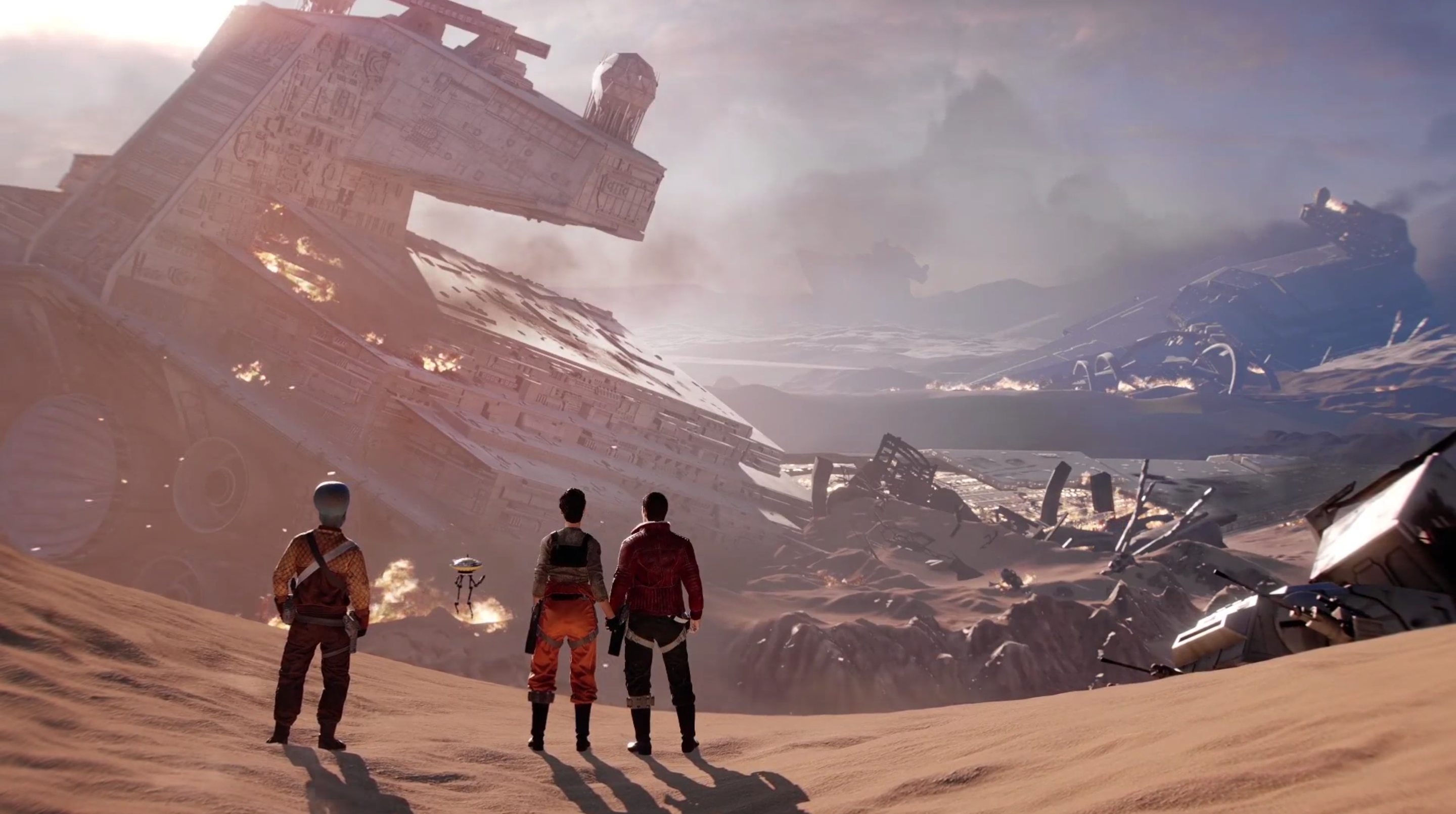
After the war ended, the New Republic demobilized its wartime forces in favor of planetary defense forces.
One of the first acts of the Senate following the signing of the Galactic Concordance was the passing of the Military Disarmament Act which drastically cut the New Republic's military to a large but operationally-limited peacekeeping force, an early goal of Mon Mothma's. The move was lauded by most who believed that the remaining Imperial hardliners posed no threat. Leia Organa disagreed and was sidelined from the New Republic's political process. The act also legitimized the mandated disarmament of the Imperial Military as outlined in the Concordance, further promoting the goal of a peaceful coexistence between the two demilitarized powers. This would also help bolster the training and funding for the local planetary defense forces to prevent the Empire's abuses and the Old Republic's failings.
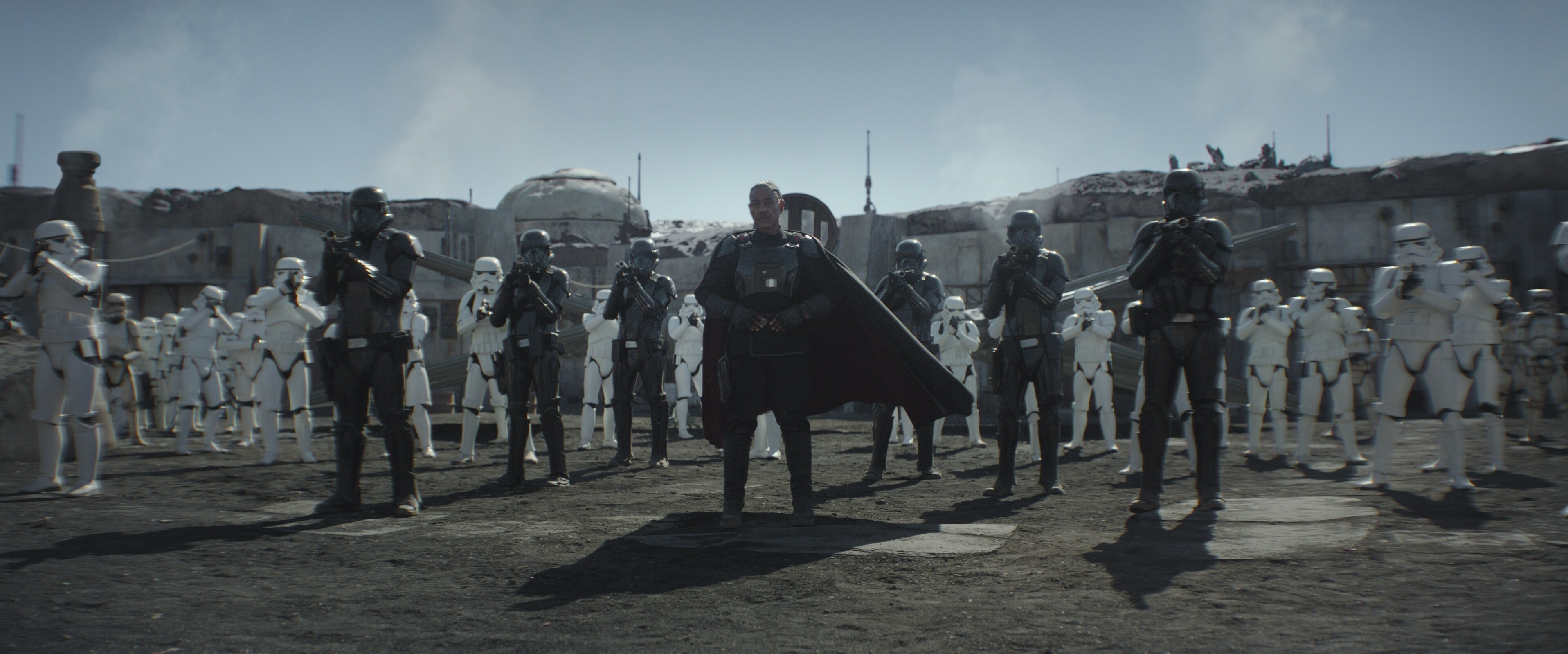
Imperial remnants persisted in spite of the New Republic's victory over the Galactic Empire.
Remnants of the Empire continued to persist in the form of Imperial holdouts, fragments of the former regime which gained footholds on distant worlds, after the Empire's collapse. Former Imperials became warlords while remnant stormtroopers dissolved into mercenary bands in service to the ex-Imperial warlords. One such Imperial remnant was led by Moff Gideon, a former officer in the Imperial Security Bureau during the Great Purge of Mandalore, who formed his faction out of the remains of the Imperial Army and Imperial Navy to achieve his ends.
By 9 ABY, the New Republic did not have complete control over the galaxy, particularly in the Outer Rim. There was little economic stability or rule of law, especially in backwater planets. Additionally, the New Republic engaged in a losing conflict against the Pirate Nation in the Mid Rim. Despite New Republic pilots, such as Captain Carson Teva and Trapper Wolf patrolling the Outer Rim in search of Imperial holdouts, Gideon's remnant activity was not interfered by the New Republic. During one patrol, Teva and Wolf chased the Mandalorian Din Djarin.
After an incident with Gideon's remnant on Nevarro, Teva had suspicions regarding the activity of the remnants, yet the leadership on the Core Worlds did not believe it. Teva recruited Carasynthia Dune, as he believed that the New Republic needed local support to stop the remnants. Valin Hess, who was an officer that served in the remnants on Morak, claimed that the Imperial remnant was growing stronger in the face of a New Republic that was "in complete disarray." Following a battle on Tython, Djarin requested Dune's help to locate Grogu. Dune used her authority to take Migs Mayfeld out of prison, to help with locating Gideon. Gideon was later arrested and was sent to the New Republic Tribunal, but he was extracted mid-transport.
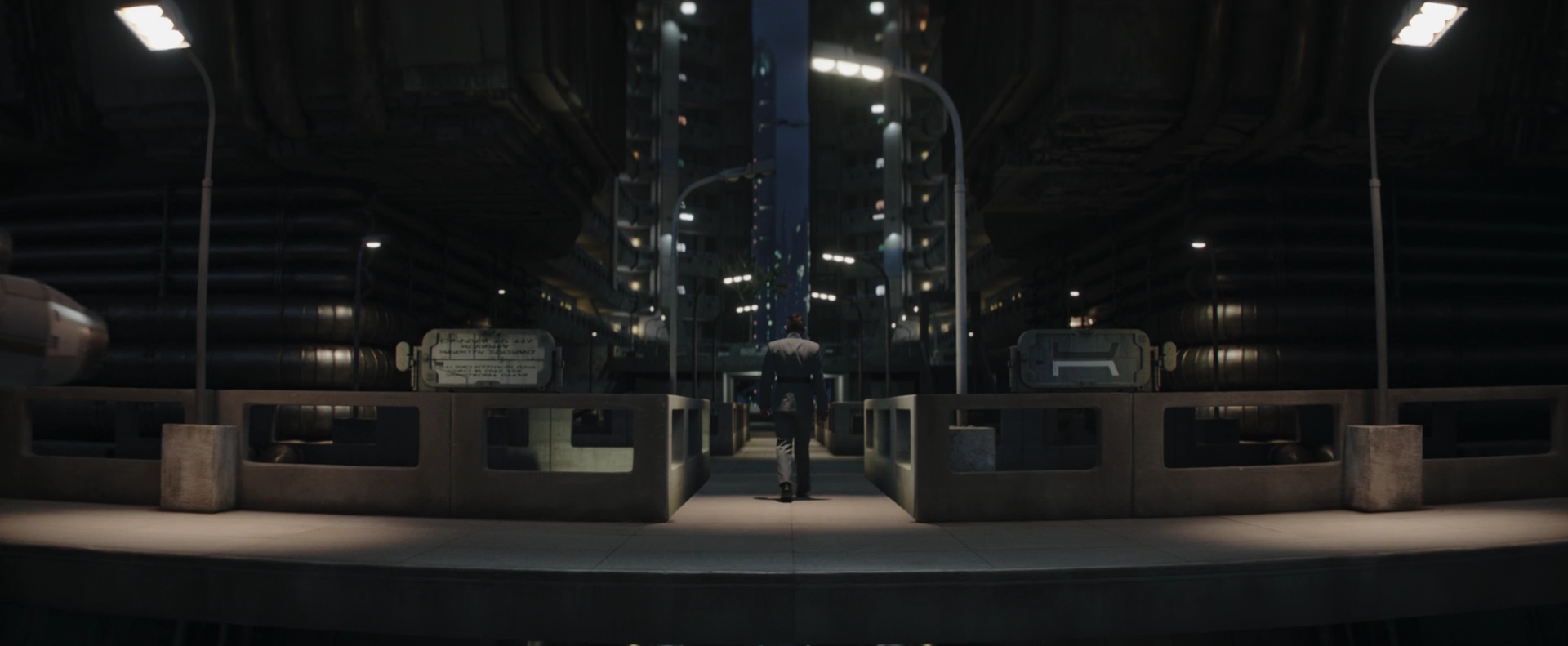
The New Republic Amnesty Program sheltered former members of the Galactic Empire on Coruscant.
The New Republic Amnesty Program was established for former Imperials who joined the New Republic in exchange for amnesty. Doctor Penn Pershing joined the program, as well as Elia Kane. Pershing and Kane resided on Coruscant, in the Amnesty Housing complex on Coruscant, along with other members of the program. The Coruscant Accords disallowed Pershing to continue his research on cloning and genetic engineering. A parole droid supervised him during the program and inquired his thoughts.
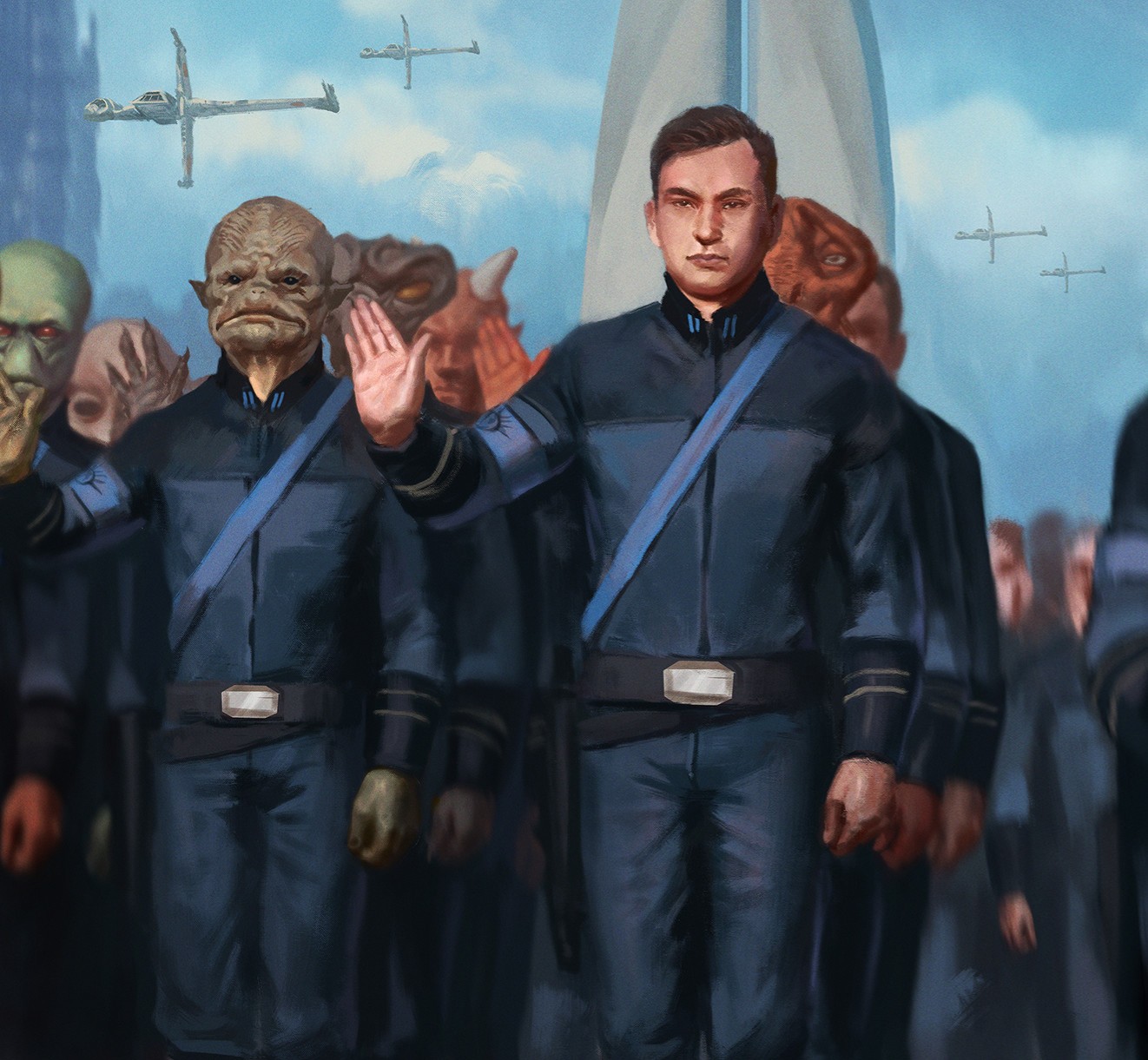
The New Republic engaged in peacekeeping missions as part of its strategy to prevent another galactic war.
The New Republic remained the dominant galactic government for three decades after the Battle of Endor, with an entire generation growing up knowing only peace with little comprehension of the Old Empire and the Galactic Civil War. Nevertheless there was still some limited military activity, for example when the Republic authorized a peacekeeping operation by sending a good-sized fleet to Kaddak in the Outer Rim in order to bring the lawless world under control, none of the ships it sent came back. Decades later, Poe Dameron remembered the failed operation and said Kaddak was bad news.
The chancellors who succeeded Mon Mothma lacked the same level of charisma and consensus that the elder stateswoman held among the Senate, while old Imperial sympathizers in the Galactic Senate would inevitably depart from it once tensions flared, having briefly existed as part of the Republic political process. While many applauded the notion, others realized that without Republic oversight into their activities, a new and even greater threat could once more return to the galactic stage. It was during this period that the Core World of Hosnian Prime served as the capital of the Republic and housed the Senate. By that time, the Senate was in political gridlock and had degenerated into infighting.
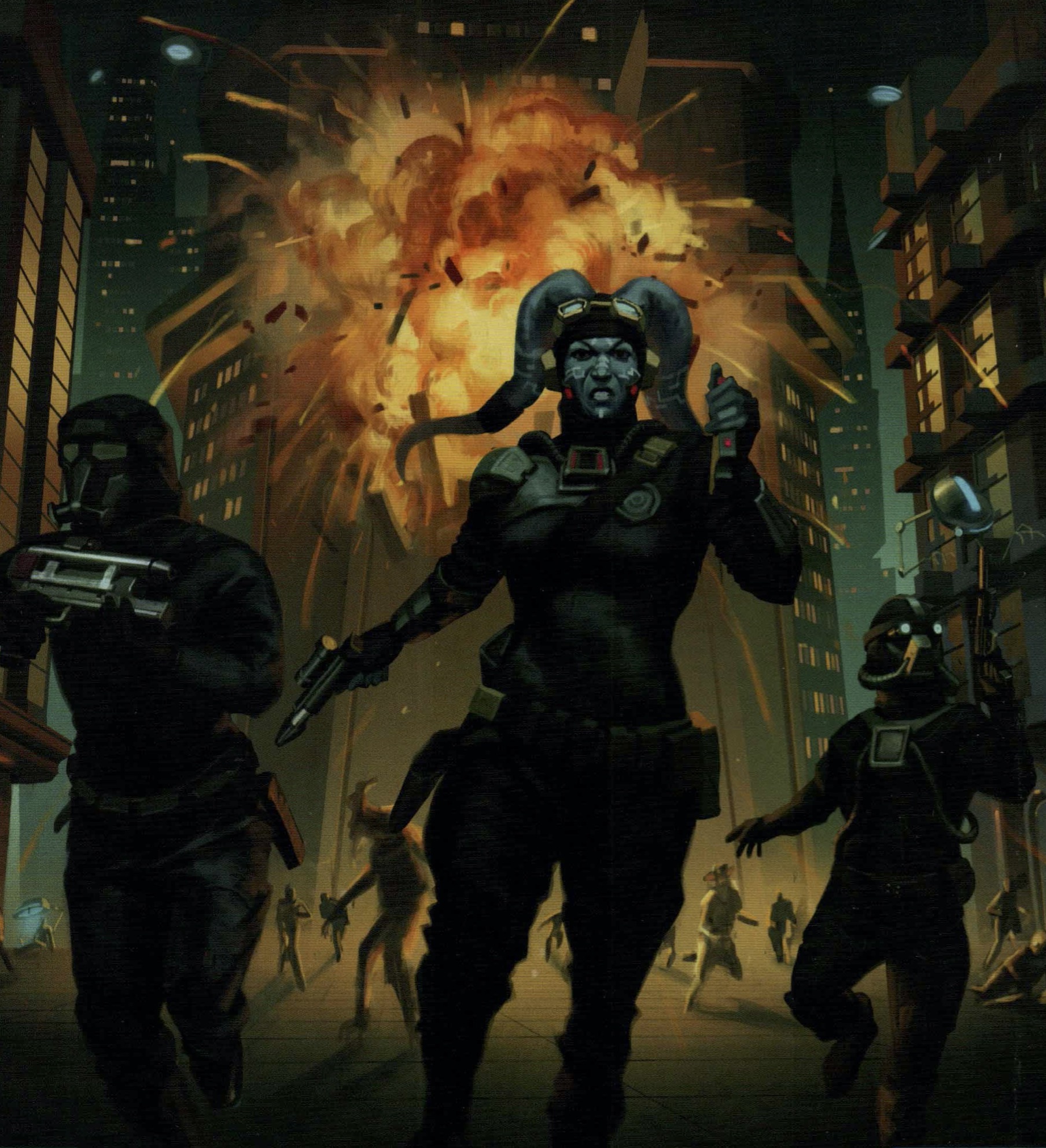
The New Republic Senate was engulfed in partisanship and political turmoil at the time of the Amaxine warrior crisis.
Two unofficial but powerful factions known as the Centrists, who advocated a stronger galactic government and military, and the Populists, who believed that individual worlds should retain most authority, squabbled for control of the Senate and the New Republic. Due to the constant bickering, the Republic was unable to enforce financial regulations and to undertake regular patrols of the galaxy's shipping lanes. This indecisiveness facilitated the resurgence of several criminal cartels including the Nikto crime lord Rinnrivin Di's cartel, which was considered to be a rival to even the greatest Hutt crime organizations at their peak—their targeting of Twi'lek shipments shipping in the Gaulus sector that housed the planet Ryloth to—which they preyed on. Ryloth was not a member of the New Republic, however, the planet still traded with the new galactic government. Rinnrivin's criminal activities had forced Ryloth's Emissary Yendor to petition the Galactic Senate for assistance. In secret the First Order, a mysterious Imperial remnant, was channeling funds into the Rinnrivin Di's cartel through a paramilitary faction called the Amaxine warriors, based on a supposedly warrior culture that dated back to the dawn of the Galactic Republic who were believed to have left the galaxy, in search of another. By the time of the New Republic, they were believed to be extinct. Several senators considered Rinnrivin's activities as an "intrasystem matter" however, the Populist Senator Leia Organa and her Centrist colleague Ransolm Casterfo then volunteered to further investigate the Nikto criminal cartel.
The two senators then traveled to the Outer Rim planet of Bastatha, which did not fall under New Republic control, this was where Rinnrivin's cartel was known to operate as it was considered a crime haven. There, Senator Organa was kidnapped by Rinnrivin, who attempted to bribe the Senator into easing Republic restrictions on the spice trade. However, Organa was rescued by Casterfo and Rinnrivin was forced to flee his hideout. Analysis of the data from Rinnrivin's headquarters indicated that Bastatha's gambling revenue was being channeled into a network of shadowy corporations based in the Outer Rim.
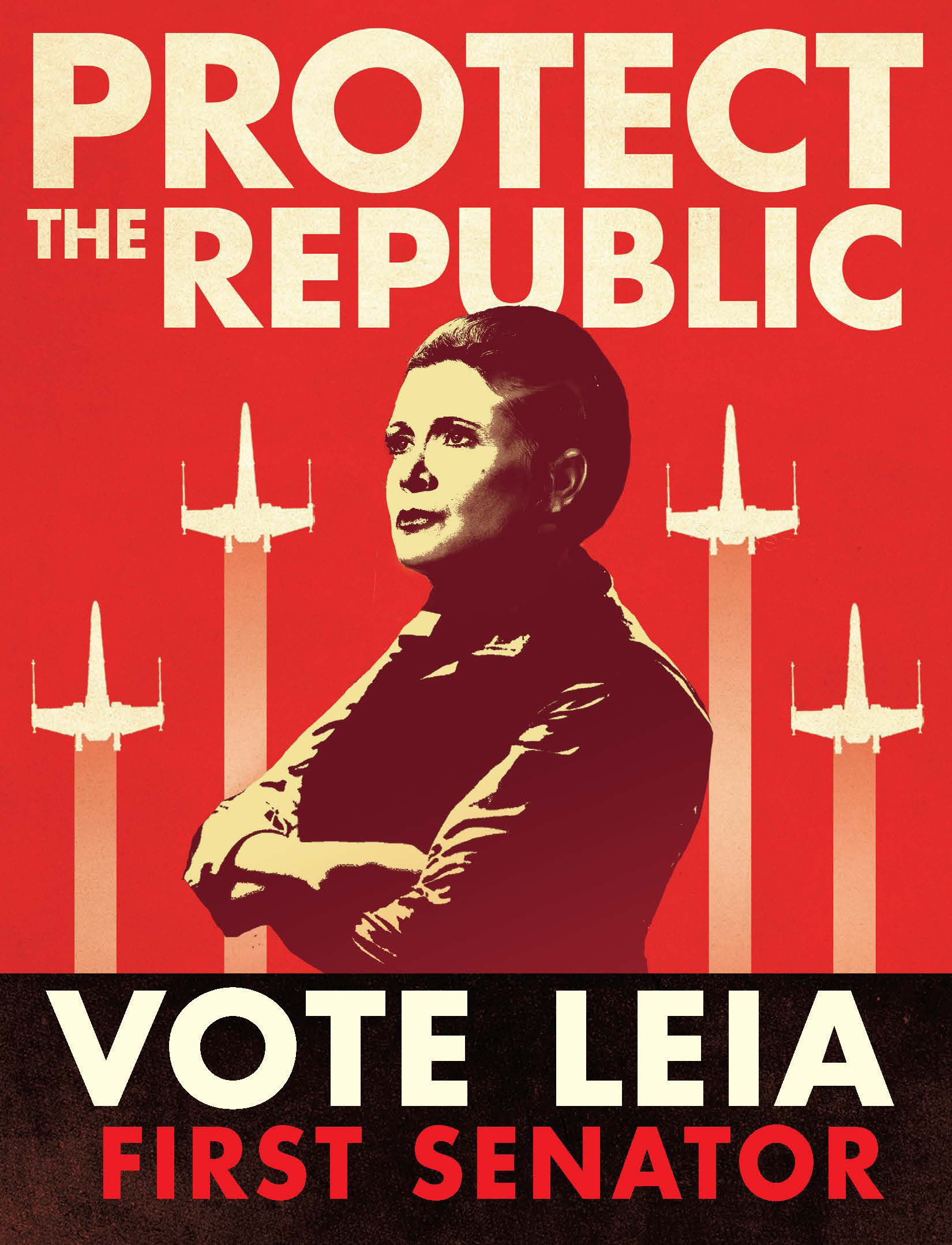
Senator Leia Organa campaigned as the Populist candidate for the proposed office of First Senator.
Following the mission to Bastatha, Lady Carise Sindian—a Centrist senator and a clandestine agent of the First Order who was working to destabilize the Republic—introduced a motion calling on the Senate to abolish the chancellorship and to create a new, more powerful post called First Senator, that would wield considerable power over the military and the economy. Senator Casterfo managed to sway the neutral senators into voting in favor of the resolution. As a result, the Senate carried the motion and the Populists were forced to change tactic by endorsing one of their own for the position. Due to her clout as the late Bail Organa's daughter and Rebel Alliance leader, Senator Organa decided to stand as the Populist candidate for First Senator. Later, Organa's starfighter pilots Greer Sonnel and Joph Seastriker discovered that Rinnrivin was hiring members of the Amaxine warriors as pilots for his smuggling and raiding operations. Over the course of their investigation, Leia and her team discovered circumstantial evidence that several Centrist senators were colluding with Rinnrivin's cartel and the Amaxine warriors. In an attempt to sow chaos, Arliz Hadrassian, a former TIE fighter pilot and the fanatical leader of the Amaxine warriors, bombed the Senate's conference hall. While no senators were killed due to the timely actions of Organa, the so-called "Napkin Bombing" was reported in the media as the most serious security incident since the end of the Civil War. Centrists and Populists soon began accusing each other of staging the bombing for political gain.
Ignoring the ongoing political gridlock, Organa and Casterfo continue their investigations into Rinnrivin's syndicate. On Leia's behalf, Ransolm traveled to Daxam IV to investigate the Amaxine warriors. While posing as an Imperial sympathizer and collector of rare Imperial artifacts, Casterfo met Hadrassian and learned that the Amaxine warriors were a large, well-armed militia group that admired the "Old Empire." Meanwhile, Organa and the rest of her team including C-3PO and Korr Sella visited the Ryloth archives and discovered evidence about Rinnrivin's "sudden" rise to power as a major crime figure. Organa's team also discovered that Rinnrivin maintained spy satellites that were linked to the Expansion Region world of Sibensko. After a secret meeting with Rinnrivin on Harloff Minor, Organa learned that Rinnrivin disagreed with the Amaxines' actions during the Napkin Bombing.
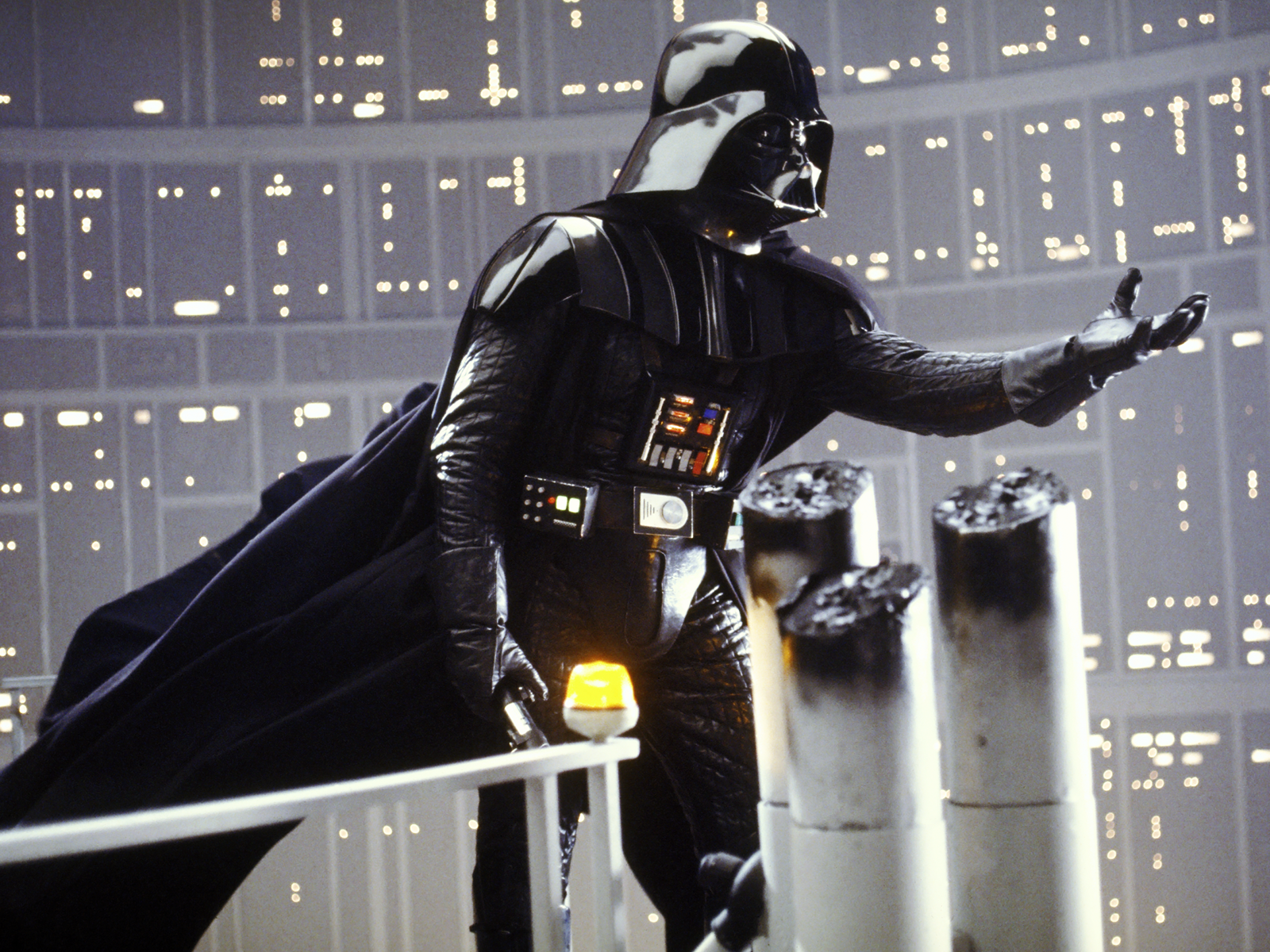
Organa's political career ended with the revelation of her secret heritage as the daughter of Darth Vader.
After returning to Hosnian Prime, Organa and Ransolm exchanged notes and made preparations to travel to Sibensko. Before they could travel there, Organa formally made preparations to announce her candidacy for First Senator at the Galactic Senate. However, Sindian, who had become the Supreme governor of Birren with the help of Organa, discovered sensitive information about Leia's true parentage as the daughter of the universally reviled Darth Vader. Unhappy that her Centrist colleague Casterfo was friendly with Organa, Sindian told him about Organa's secret. Feeling betrayed by his friend, Casterfo informed the Senate about Organa's true parentage. Due to the ensuing political fallout from the revelation, Organa's reputation was destroyed overnight and she was forced to withdraw her nomination for First Senator.
Despite this major setback, Organa still resolved to continue her investigation into Rinnrivin's cartel and the Amaxine warriors. With the help of Seastriker and Sonnel, Organa and C-3PO managed to infiltrate Sibensko. There, C-3PO discovered banking records which proved that the Amaxines and another mysterious entity were channeling funds into the Rinnrivin's cartel, which was then channeling the money into Centrist worlds. Organa and her team were pursued by Rinnrivin and the Amaxine warriors, who maintained a large base on Sibensko that included several starfighter. However, they managed to escape with the help of Han Solo shortly before a downed Amaxine B-wing starfighter collided with the Amaxines' ammunition depot; triggering an explosion that destroyed the underwater city. This crippled the Amaxines but destroyed much of the evidence linking the militia and Rinnrivin to the First Order and Sindian.
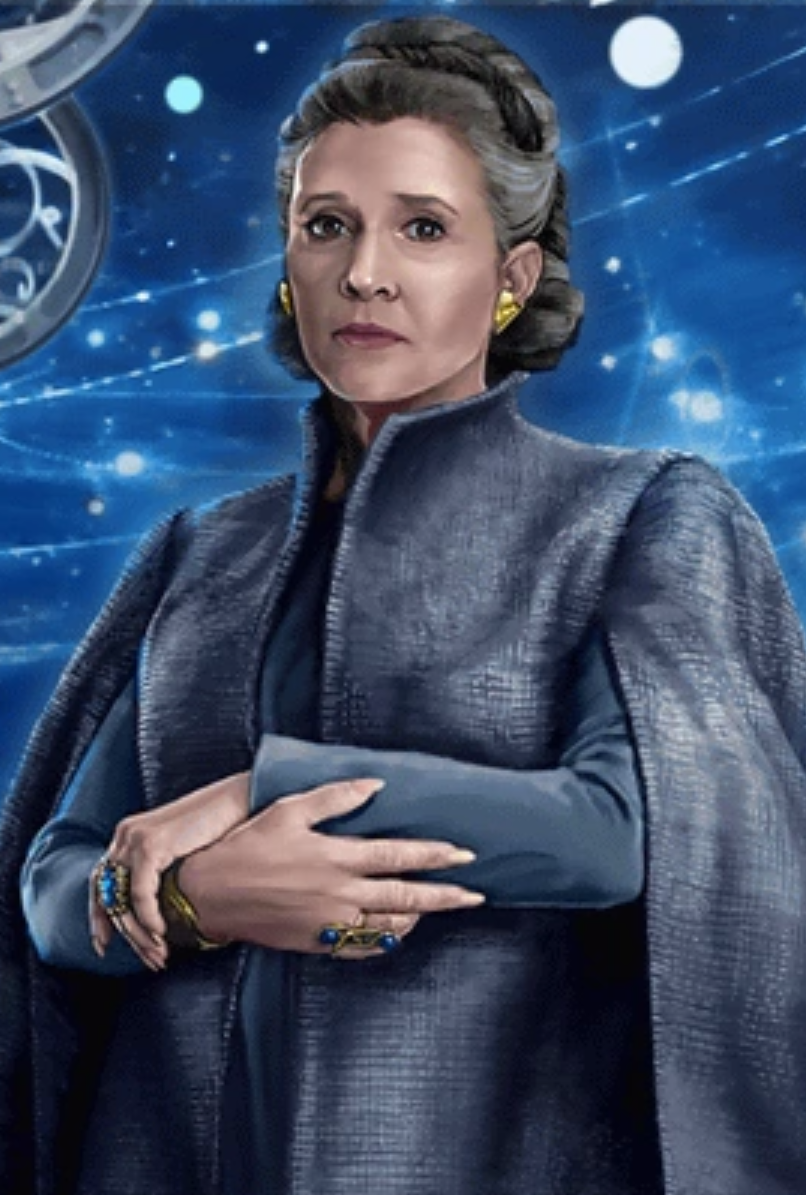
Organa formed the Resistance to protect the New Republic.
Following the events on Sibensko, Organa addressed the Galactic Senate about her investigation into Rinnrivin's cartel and the Amaxines. She ended her speech calling on the Galactic Senate to put aside their differences and to be on guard for any future threats to the New Republic. While many distrusted her due to her parentage as Vader's daughter, Senator Casterfo, who was guilt-stricken by his role in Organa's political downfall, spoke in her defense. He presented evidence about the Amaxines' arms-buildup and their admiration for the "Old Empire." Casterfo's actions earned the ire of Sindian, who wanted to use the Centrists to undermine the New Republic. Sindian hired Arliz Hadrassian to assassinate the Populist Senator Tai-Lin Garr, Organa's friend and the new Populist candidate for First Senator. Hadrassian then killed herself before she could be taken into custody. The New Republic media and public believed that Hadrassian was the sole mastermind behind the Amaxine warriors, the Napkin bombing, and Rinnrivin's syndicate. Sindian then fabricated evidence linking Casterfo to Hadrassian. Accused of sponsoring and financing Hadrassian, Casterfo was deported to his homeworld of Riosa to face imprisonment, trial, and sentencing. Realizing that Sindian was responsible for leaking information about her parentage and framing Casterfo, Organa convinced the Elder Houses to strip Sindian of all her titles and powers. Disillusioned with the infighting in the Senate, Organa resigned as senator and founded the Resistance to safeguard the Republic from all threats.
Under Organa's leadership, the Resistance became a private military force that kept watch over the First Order's movements. Although she petitioned for assistance from the New Republic, the Senate was too self-absorbed to take much notice and its slow political process frustrated the former princess.

Skirmishes between the New Republic and the First Order were common by the time of the Cold War.
An uneasy peace came to exist in the galaxy when the First Order, an Imperial successor, expanded into the known galaxy through the annexation of a bloc of star systems that had seceded from the New Republic, causing the galactic governments to enter into a Cold War with the First Order. In defiance of the Galactic Concordance, the First Order mobilized and developed its military might within the Unknown Regions as it acquired advanced weapons and starships. First Order forces would frequently cross the Trans-Hydian Borderlands.
The First Order would also frequently violate Republic sovereignty by launching several raids and incursions into Republic space itself, an example was the engagement over Suraz 4. Chancellor Lanever Villecham however installed a policy of non-aggression and therefore, refused to be drawn into a war with the First Order despite the acts of aggression and would limit any response to a mere formal diplomatic protest. Villecham's preference was to focus on trade with the neutral star systems in the Borderlands, a region of the galaxy. The chancellor made great efforts to forge agreeable trade relations with these systems, favoring this policy to action against the rise of the First Order.
However New Republic Command, unlike the Galactic Senate, did in fact view the First Order as a legitimate and serious threat, but the senate intervened and ordered them not to use the Defense Fleet in any confrontation with the First Order armed forces and were only to patrol within Republic territory in a bid to avoid a new galactic war at all costs. However Republic Command secretly began to assist the Resistance with intelligence reports.
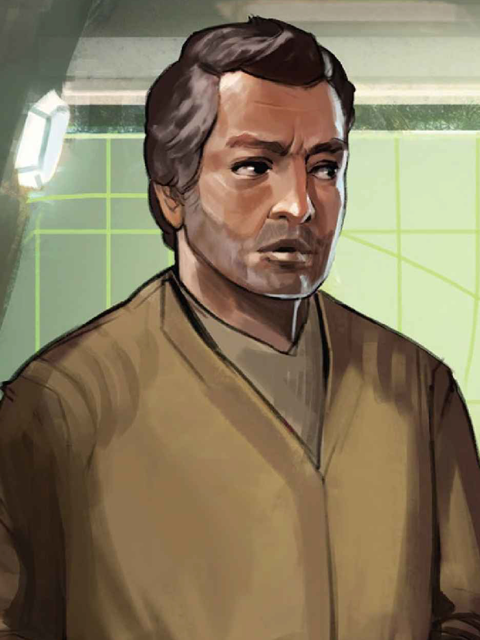
Major Lonno Deso did not consider the First Order a threat to the security of the New Republic.
Some members of the senate like the Centrists senator Erudo Ro-Kiintor even went as far as to secretly collude with the Order by derailing or even blocking motions that would have increased funding for the Republic Navy. In practice however military contracts were mostly limited due to both the disarmament policy and the growing corruption in the Galactic Senate, but one such contact was granted to Incom-FreiTek Corporation who developed new X-wing starfighters such as the T-85 X-wing Military officers, like Major Lonno Deso generally regarded the First Order as an ill-equipped, ill-funded terrorist group that simply had a good propaganda arm, and even considered Organa and her allies scaremongering troublemakers trying to relive their glory days, believing that the First Order was remaining within their assigned borders and following the tenants of the concordance, and saw little cause for alarm.
In the hopes of convincing the Senate of her point of view, Organa sent Resistance commander Korr Sella to the galactic capital of Hosnian Prime as an envoy to make a case for action by the New Republic.
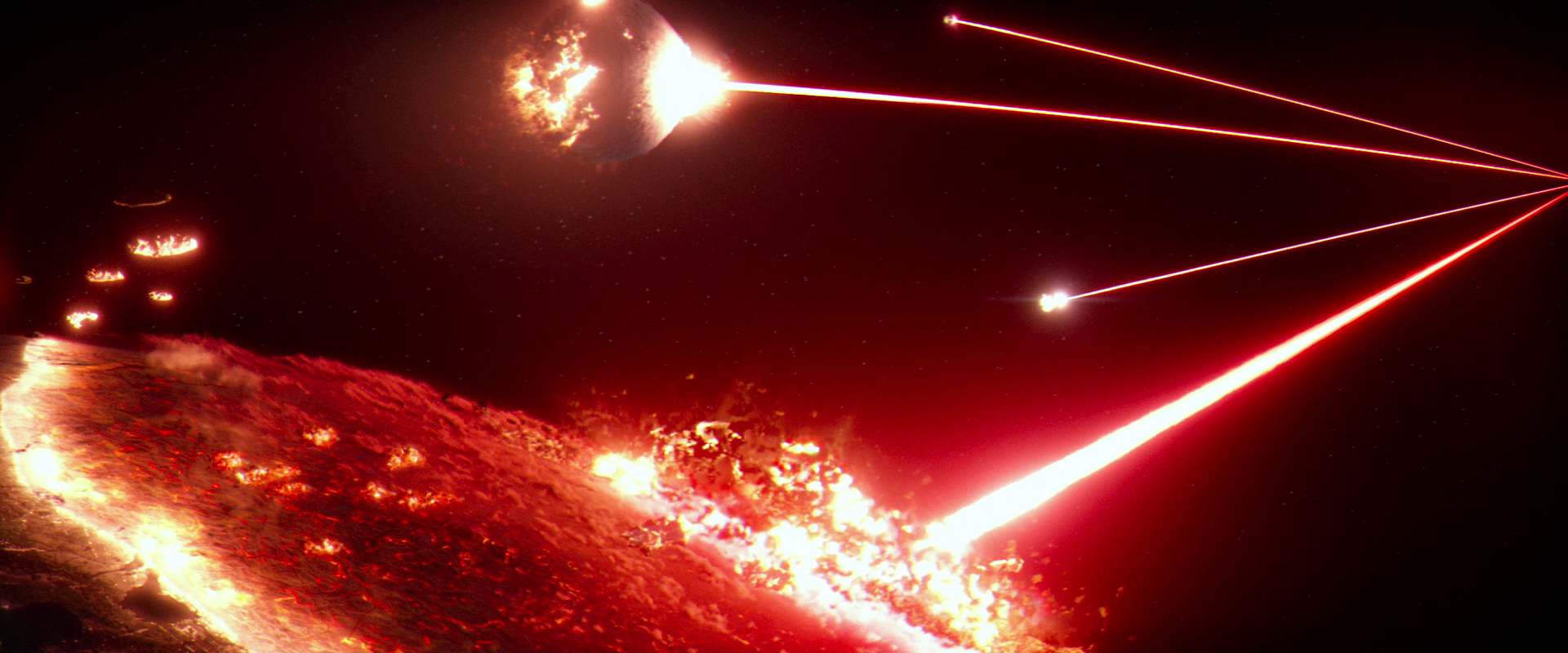
The New Republic collapsed with the destruction of the Senate along with Hosnian Prime.
Villecham's policies ultimately backfired when the First Order began its march to war. With the approval of Supreme Leader Snoke for the Starkiller Base superweapon to fire, General Armitage Hux proclaimed that the Republic would end. He commanded the weapon to fire, and massive beams of phantom energy shot across the galaxy towards the Hosnian system, destroying a number of planets including the galactic capital of Hosnian Prime, killing billions of people. The firing of the weapon also released sufficient energy to create a temporary rip in sub-hyperspace, this massive destruction ignited a new galactic war, with the blast becoming visible from across the galaxy with the Republic leadership and the Home Fleet all obliterated, causing terror and shock on countless worlds who had no idea of what was happening.
The Resistance subsequently attacked and destroyed Starkiller Base before the First Order could use it against their headquarters on D'Qar. Regardless, the First Order was positioned to seize military control of the galaxy. Having destroyed the New Republic, the First Order successfully intimidated various worlds into capitulation while others willingly supported the First Order out of a desire for security. Surviving former senators and commanders dissolved their task forces and returned these forces to their homeworlds to defend them.

Vice Admiral Amilyn Holdo declared that the mission of the Resistance was to achieve the restoration of the Republic.
Vice Admiral Amilyn Holdo assumed command of the Resistance after General Organa was incapacitated during the First Order's Battle of Oetchi. Believing the Resistance was essential to the restoration of the Republic, Holdo declared that the organization had to survive in order to inspire opposition against the First Order throughout the galaxy.
In the wake of the Republic's collapse, the First Order stood poised to control the major systems as the next dominant galactic power in the galaxy. General Hux hoped that the innovations of the First Order would bring down the remnants of the New Republic and the Resistance. Deprived of the Republic's support, General Organa dispatched agents across the galaxy to gather support for the Resistance's cause. Yet in spite of their call to arms, the Resistance stood alone in their war to defeat the First Order and restore the New Republic until one year later when a combined Citizens' Fleet came to the aid of the Resistance at the Battle of Exegol, where together, they defeated the Sith Eternal and its forces, leading to uprisings against the First Order across the galaxy. In the wake of their victory, General Lando Calrissian ruminated on the fact that the future was now open to vast possibilities, one of them being the return of the New Republic in some form.
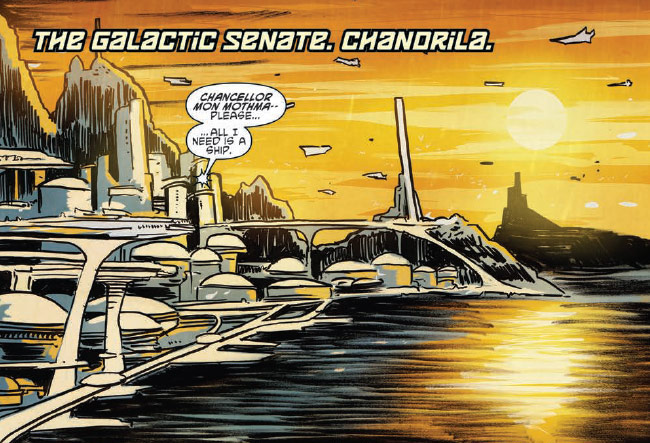
The New Republic was an interstellar democratic state like its predecessor, the Old Republic.
The office of the chancellor would have little central authority and was not an executive position, and was subjected to restrictions that were designed to prevent the head of state from accruing any real power. The Galactic Senate instead held executive powers, with representatives being chosen by the will of the people, giving its member worlds more influence over galactic matters of state. The New Republic government itself had a decentralized structure.
While the position of chancellor was formally known as Supreme Chancellor, this title was rarely used as a result of the Mothma reforms of the charter of Chancellor, a document that empowered the chancellor to serve as the leader of the new Galactic Senate. To prevent further abuses of the office, Mothma gave up these emergency powers and set forth a plan to give aid to war-torn worlds and bolster the training of their planetary defense forces so that they could defend themselves. The chancellor also submitted to the will of the Senate, even in military matters such as the disarmament of the New Republic Defense Fleet.
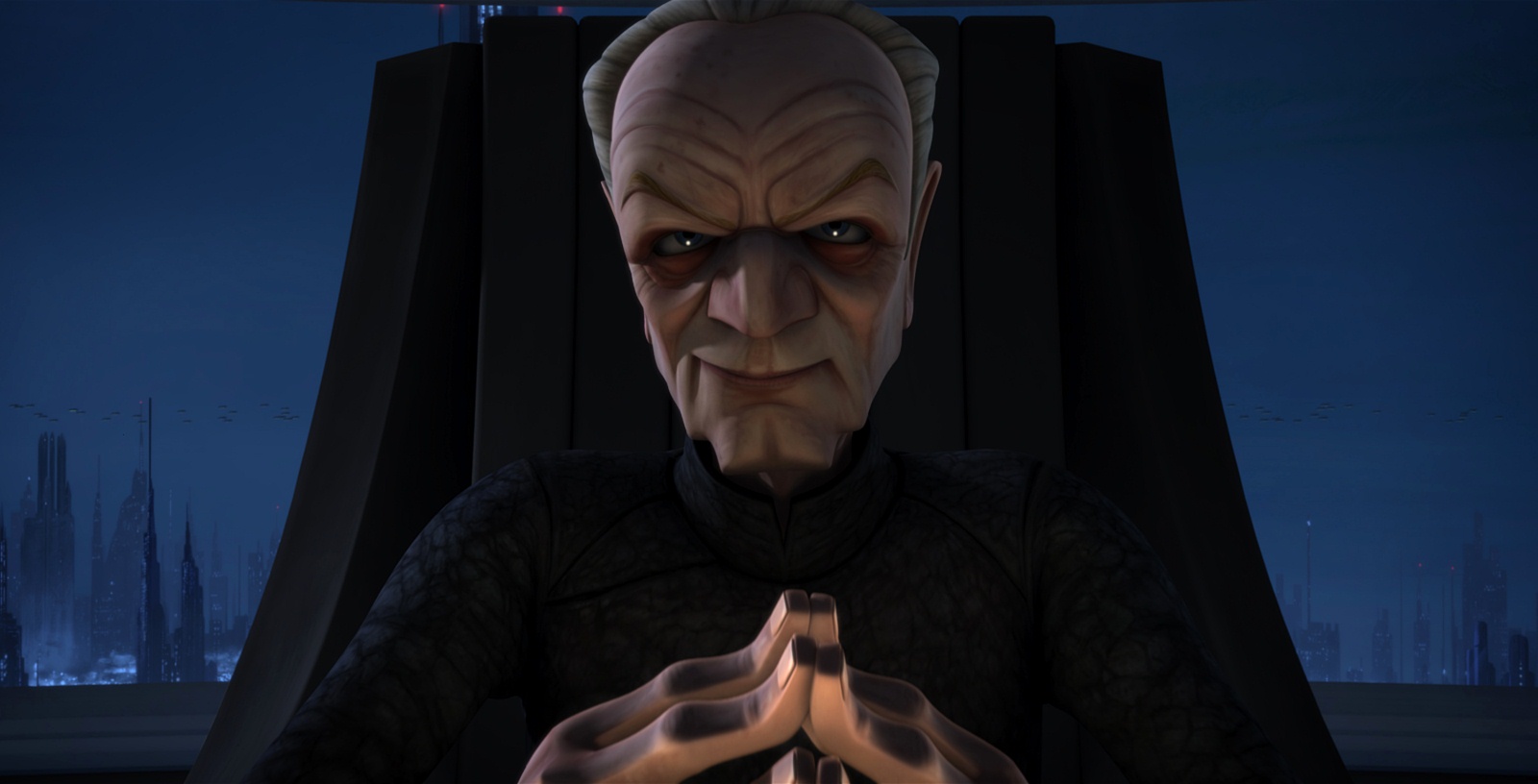
The history of Sheev Palpatine's chancellery caused the New Republic to limit the authority of its executive branch.
With the signing of the Galactic Concordance on Chandrila, the New Republic secured both victory and peace. Several changes were made to the political process to ensure mistakes of the Old Republic were not repeated. The New Republic, in accordance with its humanitarian values prohibited torture as part of the concordance, however the divisive topic on the treatment of former Imperials would occupy much heated debate. Some wished to execute and punish those responsible for war crimes, while others were dismayed at the thought of succumbing to the barbarities of the former regime, and emulating what they had fought so hard against.
Ultimately, the fact that billions of individuals had participated in the Empire—many of them against their wishes—cooler heads prevailed, allowing for leniency in sentences and the invitation of former Imperial governors to the New Republic. Likewise, civilian and military personnel were offered a new life within the annals of the nascent Republic. However, despite its idealism, the New Republic never took root on a scale comparable to the Old Republic. Additionally, the Senate passed the Military Disarmament Act which, while maintaining the New Republic Starfleet, greatly reduced its size and capabilities.
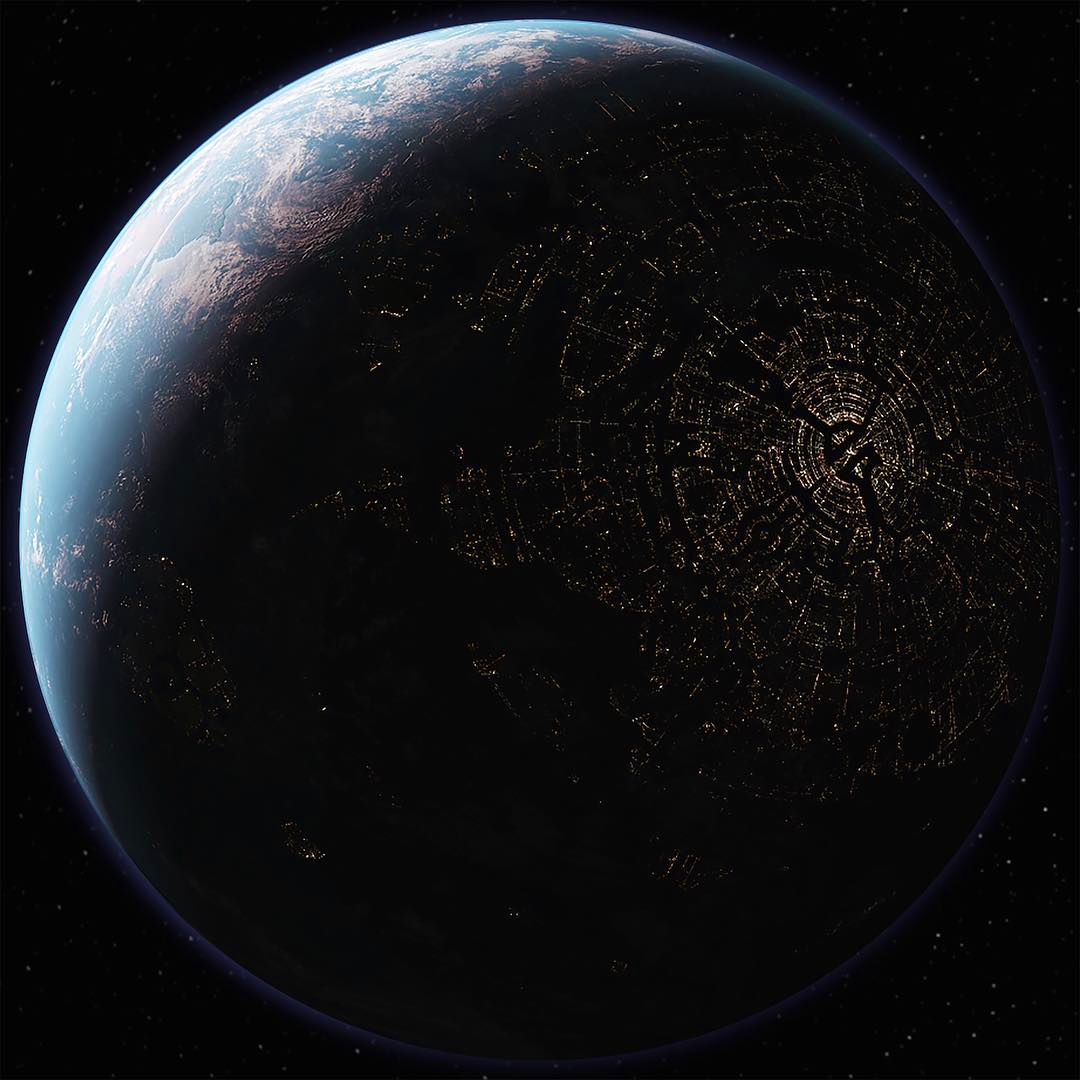
Hosnian Prime and other New Republic worlds were given the chance to serve as the galactic capital, a status that once belonged to Coruscant alone.
In order to gain the support of disaffected worlds and prevent friction that had occurred during the Old Republic and later the Empire, the New Republic government chose to not settle down on Coruscant. Instead, member worlds would host the galactic capital on a rotating basis with elections deciding where to seat the Senate. Despite its outward appearance of unity, the Senate was divided into two feuding factions, the Populists, which believed that almost all authority should reside in individual member worlds, and the Centrists, who supported a stronger central government. The two factions frequently squabbled over policies and government spending, creating an atmosphere of political deadlock and distrust in the Senate. As a result, the Republic was unable to carry out several of its functions including preventing the resurgence of organized crime, enforcing financial regulations, and patrolling the shipping lanes.

The Centrists seceded from the New Republic and joined the First Order, a successor to the Old Empire.
In response to the political gridlock, the Centrists Lady Carise Sindian and Ransolm Casterfo proposed the creation of the office of First Senator, that would wield considerable power over the galactic economy and military. The Populist Senators Leia Organa and Tai-Lin Garr were considered as viable candidates for that office until revelations into the former's parentage and the latter's assassination. In response to the political unrest resonating from Garr's death and Casterfo's arrest, the Senate passed a motion delaying elections for the near future. This was supported by Sindian and her Centrist allies, who planned to secede from the New Republic and join the growing First Order.
Prior to Poe Dameron's search for Lor San Tekka, several members of the Galactic Senate including the Centrist Erudo Ro-Kiintor, were colluding with the First Order, which had seceded from Republic politics some time past. In return for receiving large sums of credits transferred through the Corporate Sector Authority and third-party corporations, Ro-Kiintor and other like-minded senators frequently delayed, derailed, and dismissed motions regarding sanctions against the First Order and increased support for the Republic Navy.
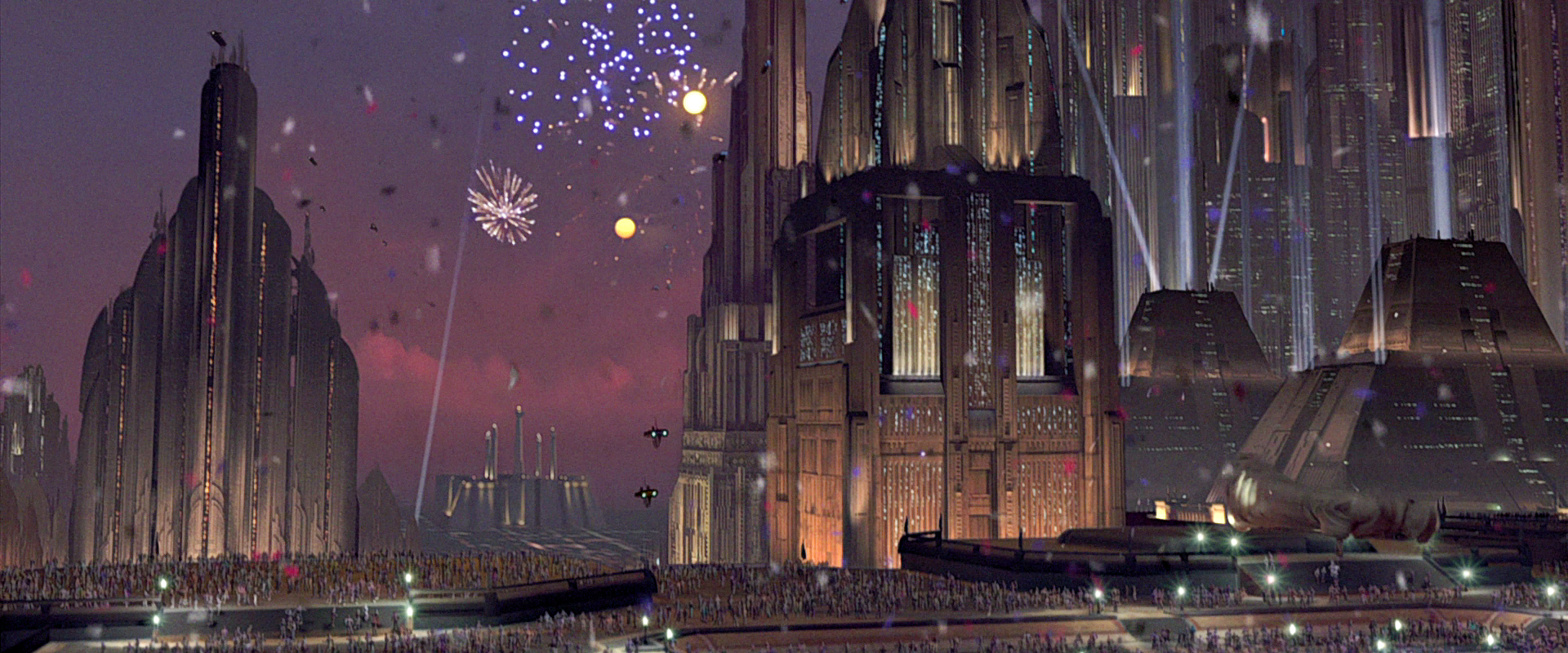
The provisional government on Coruscant was overseen by New Republic officials.
The New Republic evolved from the Alliance to Restore the Republic to become the new galactic government. During the last stages of the Galactic Civil War, the New Republic's ranks were swelled by numerous defecting worlds and systems. In the face of the Republic's relentless military advances against the Galactic Empire, Grand Admiral Sloane proposed peace talks with Chancellor Mon Mothma and Fleet Admiral Ackbar on Chandrila. Following the Battle of Jakku, the Republic signed the Galactic Concordance with the Galactic Empire, which imposed strict disarmament treaties and punishing reparations that limited it ability to wage war and ordered the Empire to dissolved. While a provisional government—led by Grand Vizier Mas Amedda after the Empire ceded its capital to the Republic—was installed on Coruscant, the administration was placed under the jurisdiction of New Republic overseers. During that period.
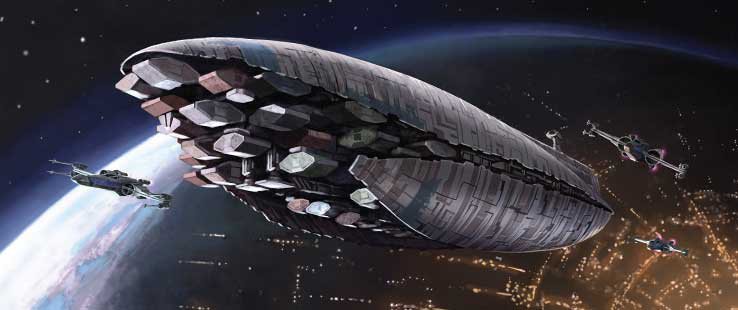
The New Republic utilized GR-75 medium transports for relief supply missions.
After the Galactic Civil War ended, GR-75 medium transports were used for aid and supply missions by the New Republic. About thirty years after the Battle of Endor, the New Republic believed that neither the First Order nor other remnants of the "Old Empire" posed a threat and thus turned its attention to reshaping galactic politics. Chancellor Lanever Villecham favored developing closer trade relations with the Trans-Hydian Borderlands as opposed to taking military action against the First Order.
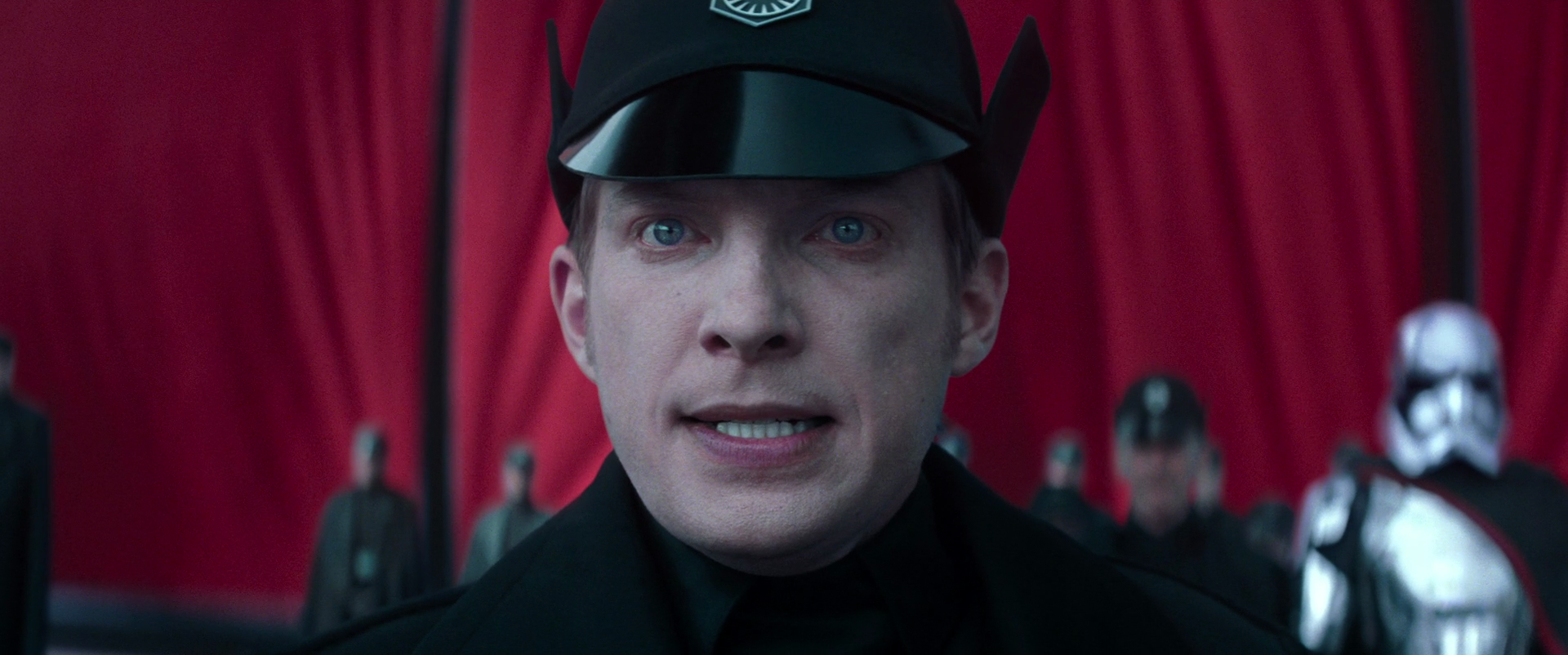
First Order General Armitage Hux accused the New Republic of deceiving the galaxy by secretly supporting the Resistance.
The New Republic tolerated the Resistance, a private military force created by General Leia Organa to monitor the movements of the First Order. While the New Republic officially tolerated the Resistance, it was reluctant to help the Resistance since it was wary of risking war with the First Order. Conversely, the Resistance's leadership found the Galactic Senate too slow and too preoccupied with self-interest to be of any help. The First Order on the other hand despised the New Republic as an illegitimate regime that tolerated disorder and supported the Resistance. In an effort to destroy the Republic, the First Order launched a preemptive attack on the Hosnian system, which at that time, hosted the Senate and the New Republic Starfleet.
In addition, the New Republic also had political and trade relations with independent, non-member worlds, like Ryloth. The New Republic was also known to place troubled non-member worlds, like Bastatha on conditional probational advice, which allowed the Republic to observe and track activity around the planet for a certain period. The New Republic also had to contend with several other powers, including the New Separatist Union, the Confederacy of Corporate Systems, and the pirate state known as the Sovereign Latitudes of Maracavanya.
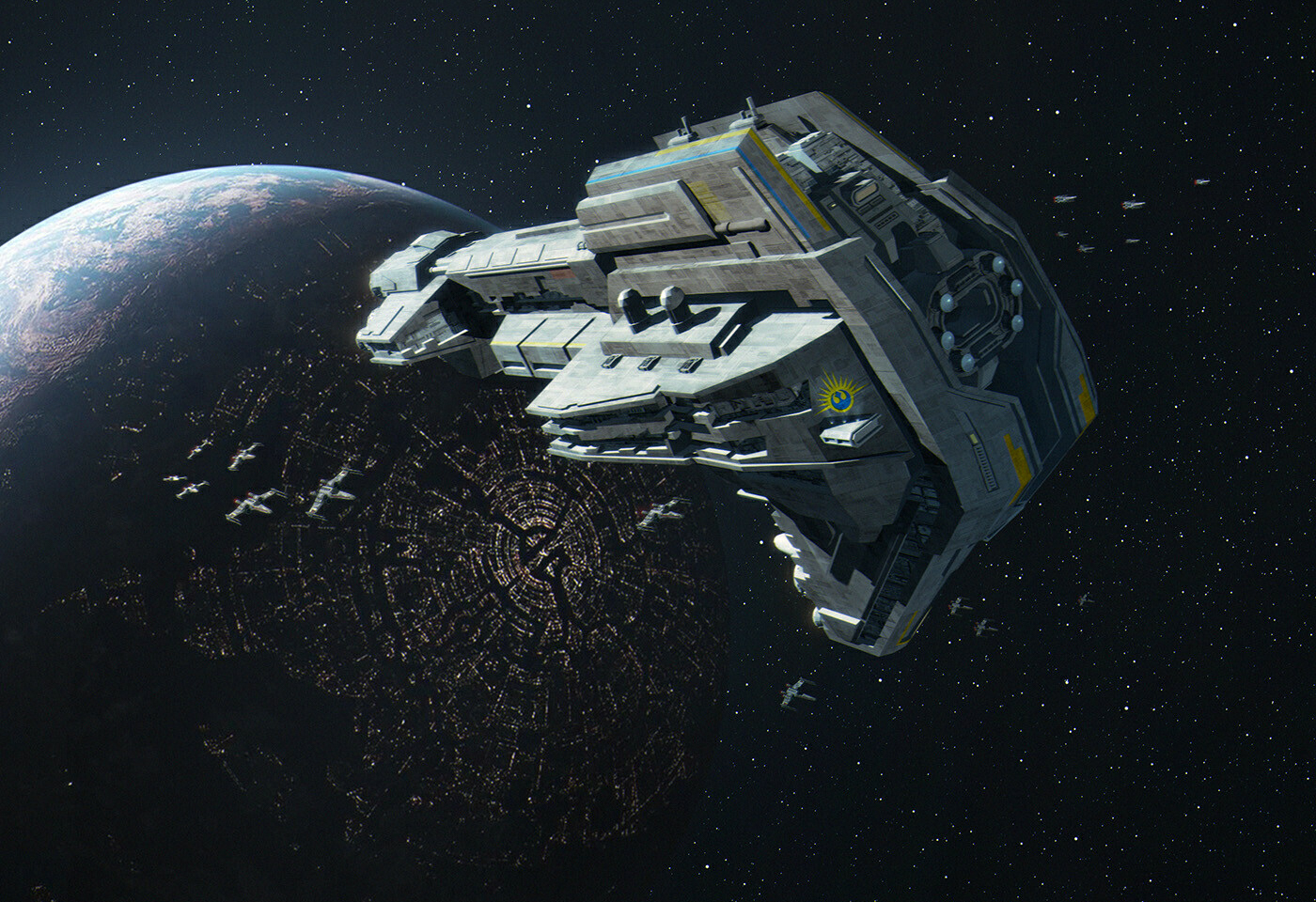
The New Republic Defense Fleet was the naval service branch of the New Republic Defense Force.
The New Republic Defense Force was the peacekeeping force responsible for the defense of the New Republic. It encompassed three branches: the New Republic Defense Fleet, the ground-based New Republic army, and the New Republic Special Forces. The Defense Fleet was based on Chandrila. The Defense Force traced its roots from the military formations of the Rebel Alliance that fought against the Galactic Empire, with the newly established New Republic Defense Force seeing extensive action against the remnants of the Empire after the Battle of Endor. Following the Galactic Concordance, the Galactic Senate enacted the Military Disarmament Act that drastically reduced the New Republic military to a smaller peacetime force. The act had originated as an initiative of Chancellor Mon Mothma, who believed that a demilitarized galaxy was conducive to lasting peace and freedom.
In the years after the Battle of Endor, the New Republic established a series of academies on several worlds, including Chandrila, to replace the old network of Imperial Academies. One notable graduate was the starfighter pilot Joph Seastriker. About twenty four years after the events on Endor, at least one Centrist senator regarded the New Republic academies as inferior imitations of their Imperial predecessors. As a result, the study programs of the Old Empire's academies were reintegrated into the curriculum of academies based on Centrist worlds. Reflecting the New Republic's anti-militaristic ethos, its soldiers wore simple jackets, trousers, and little armor that were designed not to instill terror and awe,. The New Republic Starfleet maintained a Digital Warfare Department, and a Pilots Commission existed two years after Jakku, which was led by Han Solo.

The New Republic Defense Force was a peacetime military force.
Some of the peacetime functions of the New Republic Starfleet included enforcing financial regulations and conducting comprehensive patrols of galactic shipping lanes in order to protect the galaxy from large-scale organized crime syndicates and escorting senators on government business. The Republic Starfleet was the largest defense force in the galaxy, but its size and capabilities were greatly reduced by the Military Disarmament Act, and the Republic instead encouraged bolstering the training and funding for local planetary defense forces. While it had enough resources to defend the entire galaxy in peacetime, several Centrist senators like Erudo Ro-Kiintor frequently lobbied for more government funding to be diverted for planetary defenses; a pretext for earmarking funding to Centrist worlds.
The Defense Force was led by a Fleet Admiral and New Republic High Command. Prior to the destruction of the Hosnian system, Republic Command ordered its military personnel and units not to engage in hostilities with the First Order due to the Galactic Senate's desire to avoid another war.
The judiciary included the New Republic Tribunal, which had a range of powers such as commissioning hunters to bring in Imperials like Vice Admiral Perwin Gedde to face justice. With freedom restored, some looked to resolve issues in New Republic courts. A notable example was the Narquois of Narq, who, taking advantage of the new era, decided to sue the Neimoidians in the courts and sought unprecedented levels of compensation for how their species had been treated for centuries.
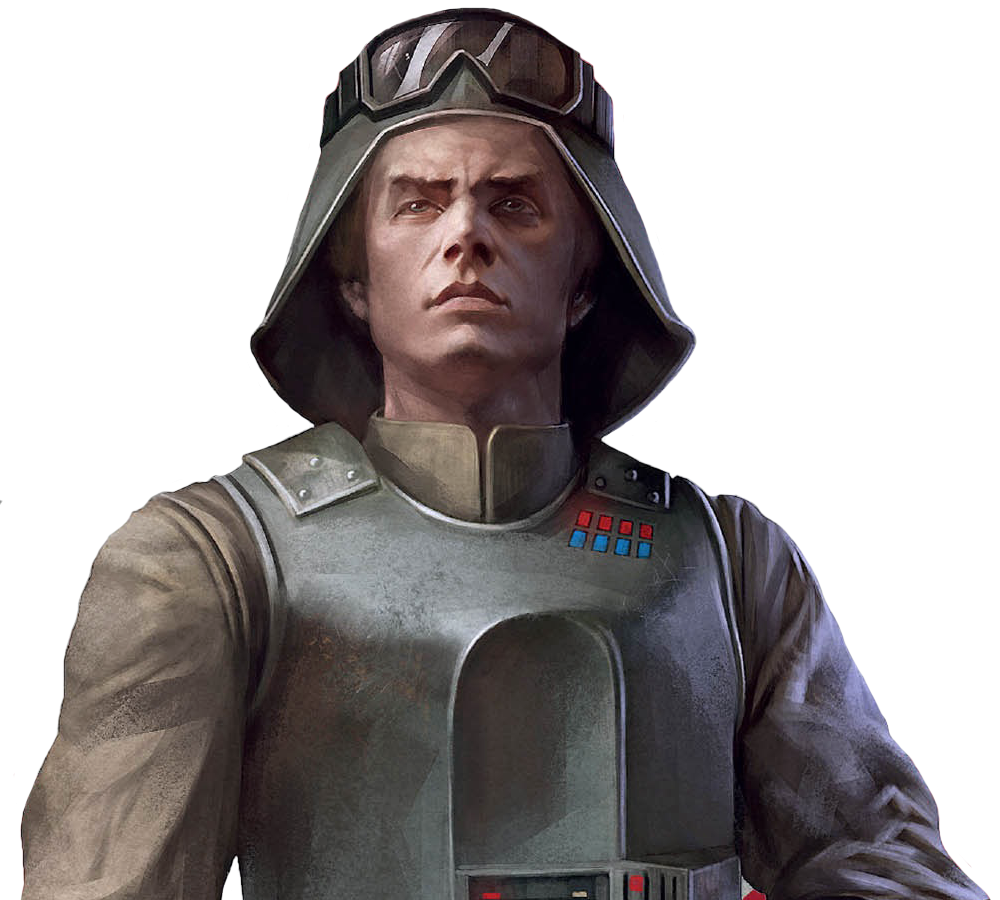
Imperial officers were designated as war criminals by the New Republic.
Besides its standing military, the New Republic also established a security agency called the New Republic Security Bureau to protect the Republic from internal security threats. Unlike the Old Republic and the Old Empire, the New Republic ceased hiring bounty hunters for a period after the attack on Chandrila since soliciting their services made the New Republic's military and security establishment look weak. By the time of the Battle of Jakku, the New Republic law enforcement database was linked to the Coronet City Peace and Security's records. This allowed Norra Wexley's team to identify the location of the bounty hunter Mercurial Swift's mother Tabba Teldar. Following the signing of the Galactic Concordance, all Imperial officers were designated as war criminals by Chancellor Mothma. However, civilian functionaries were given conditional pardons as long as they complied with the terms of the Galactic Concordance.
The Department of Prisons was responsible for concerns regarding prisons under the jurisdiction of the New Republic. The Republic began a privatization of the prison system and started outsourcing the running of some prisons, such as Megalox, to private individuals such as Warden Luta by 34 ABY. Megalox was considered to be home to many of the worst criminals on the galaxy. Megalox was situated on the high gravity world of Megalox Beta and protected by a gravity shield. Prisoners were left to fend for themselves and subsisted on supplies ferried from an orbiting space station. Some notable inmates included Grakkus the Hutt, Papa Toren, Kan Be, and Isin. Visitors could bribe their way inside the prison.
As well as the prison on Megalox, the New Republic held prisons on Clak'dor V, the Delrian Prison Planet, Garen IV, Jubilar, Karthon Chop Fields, Oovo 4, Lola Sayu, Selnesh, Sunspot Prison, Tamazall, Wobani, and Virujansi around 9 ABY.
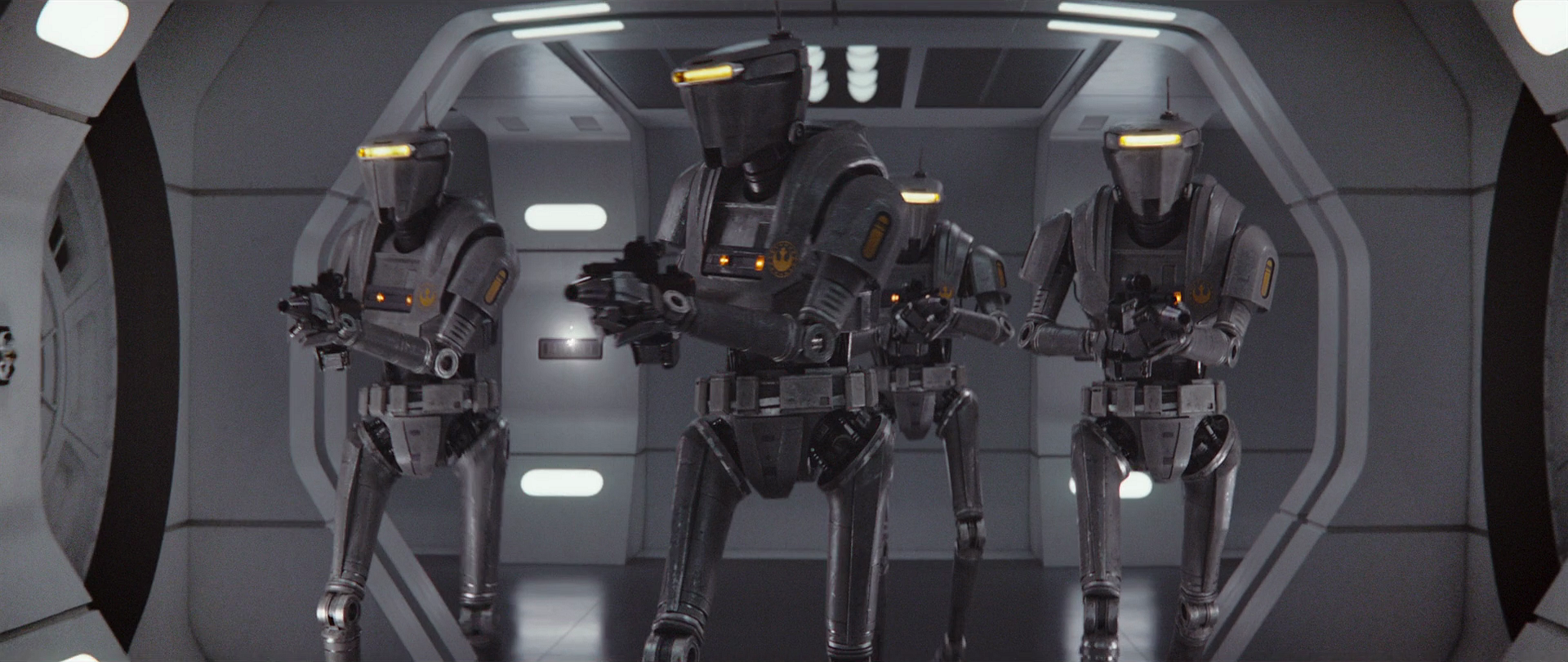
Security droids supplemented the organic personnel of the New Republic Correctional Corps.
The New Republic Correctional Corps was responsible for overseeing prisoners of the New Republic. The Corps consisted of New Republic corrections officers, such as Lieutenant Lant Davan, supplemented by N5 sentry droids and R1 Security Droids. The Corps used New Republic Correctional Transports as prison ships. Additionally, prisoners of the Correctional Corps were sent to the Karthon Chop Fields, where they served out their sentence as prison labor recycling derelict Imperial vessels and equipment.
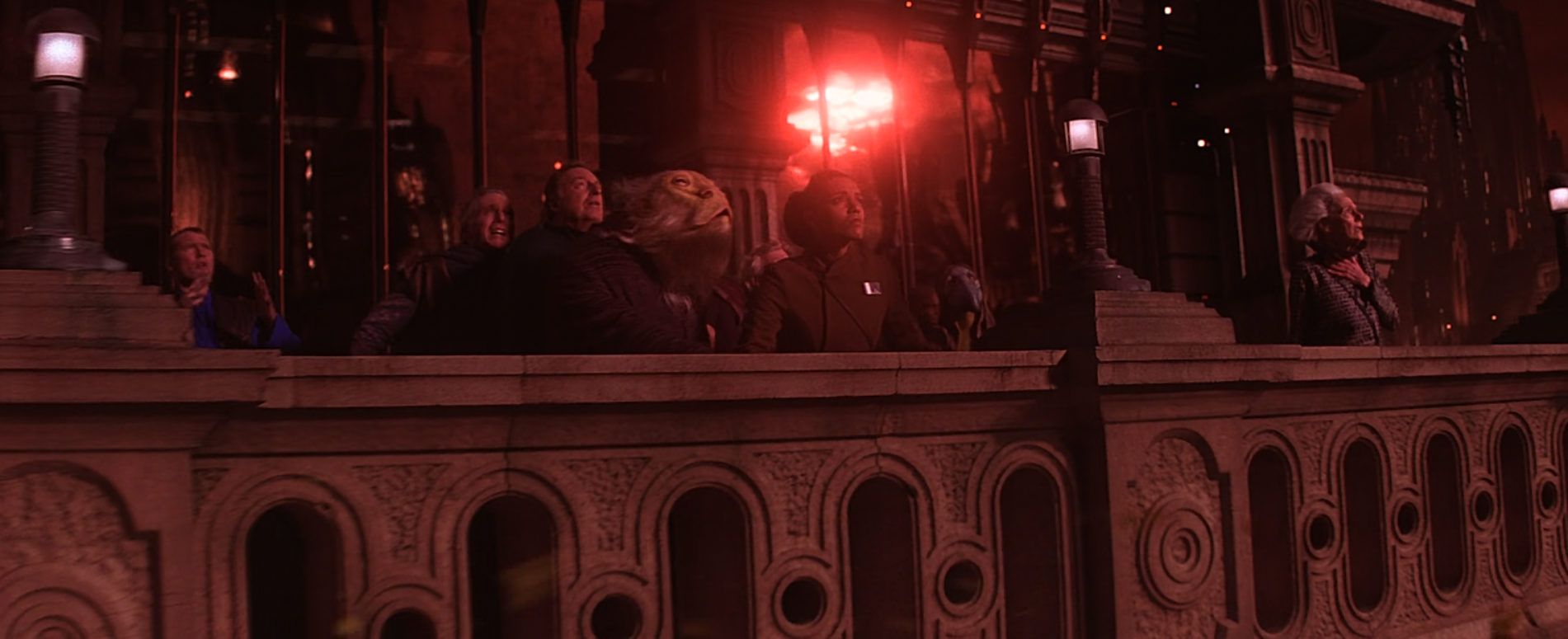
Representation in the New Republic extended to human and various non-human species alike.
In contrast to the xenophobia of the Empire, humans and aliens were equally represented in New Republic government institutions, like the Galactic Senate. About six years before the destruction of the Hosnian system, there was a divide between Populist and Centrist worlds, which reflected the two main political factions in the Senate. Populist worlds supported greater planetary autonomy, with some Populist senators advocating that citizens vote on Senate legislation and others urging the abolition of the Senate. Meanwhile, Centrist worlds advocated a stronger central government and military and took a tough stance on law and order. Some Centrists like Lady Carise Sindian were nostalgic towards the Old Empire and supported the idea of the Centrist worlds seceding from the New Republic to join the First Order.
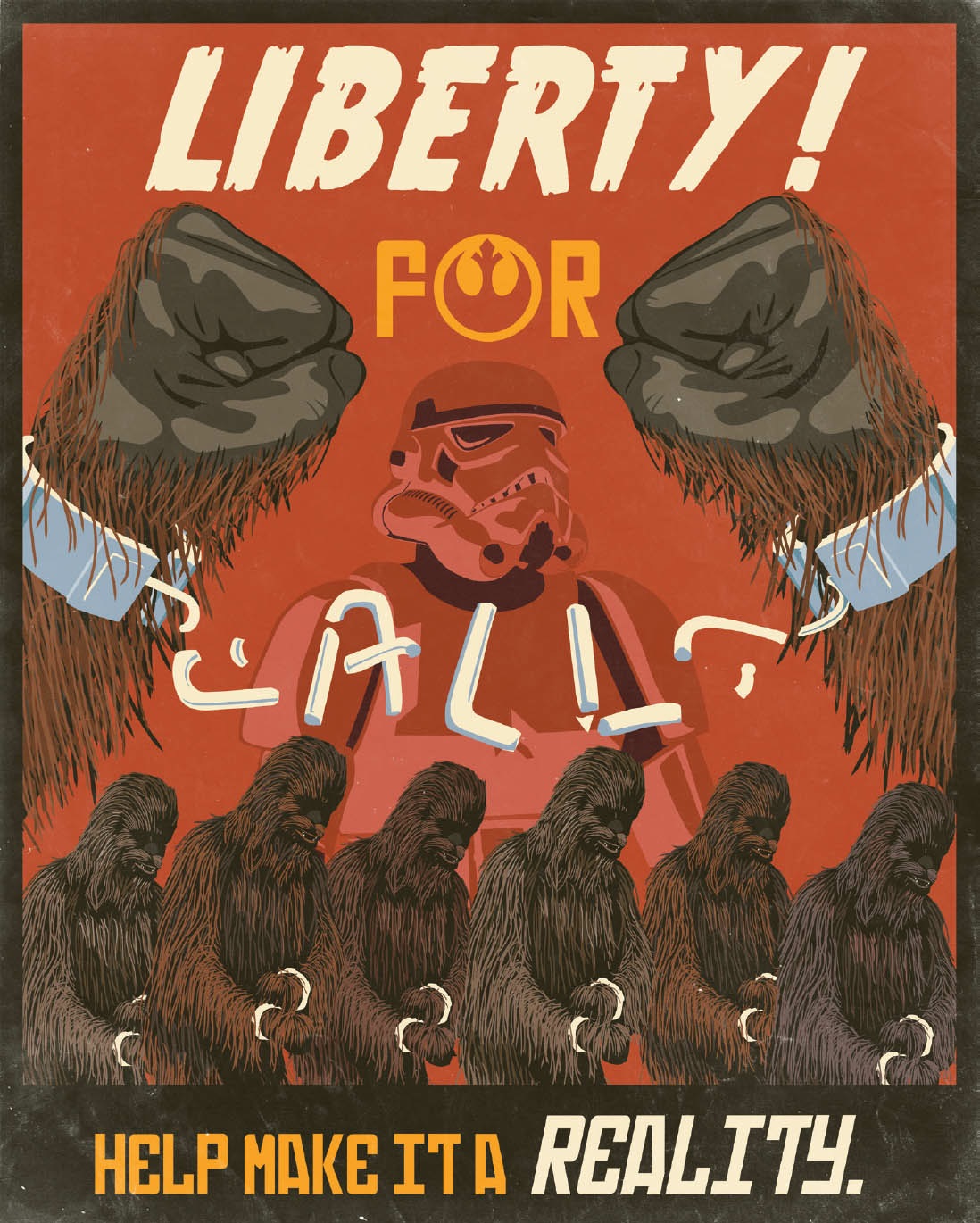
As a society, the New Republic was diametrically opposed to the Galactic Empire.
As the successor to the Alliance to Restore the Republic, the New Republic saw itself as a democracy where free exchange of ideas and opinions were actively encouraged and protected. Government debates on proposals and policies were broadcast on HoloNet to promote transparency and accountability. In the aftermath of the Battle of Endor, the New Republic passed legislation which directed some government expenditure for non-military usage, cleaned up polluted worlds, and compensated alien species that had been enslaved by the Empire. Rejecting the totalitarianism and censorship of the Galactic Empire, the New Republic eased restrictions on the media. Following the liberation of Akiva, the newly unfettered HoloNet reported on Imperial atrocities, such as the wholesale massacres of native populations carried out by Imperial commanders and Imperial suicide attacks on entrenched New Republic positions. Media were allowed to debate current affairs events like the aftermath of Battle of Jakku.
The working language of the New Republic was Galactic Basic Standard, and was the most used in the galaxy. Aside from Basic however, several other languages were spoken freely across the Republic, including Shyriiwook, Rodian, and Sullustese
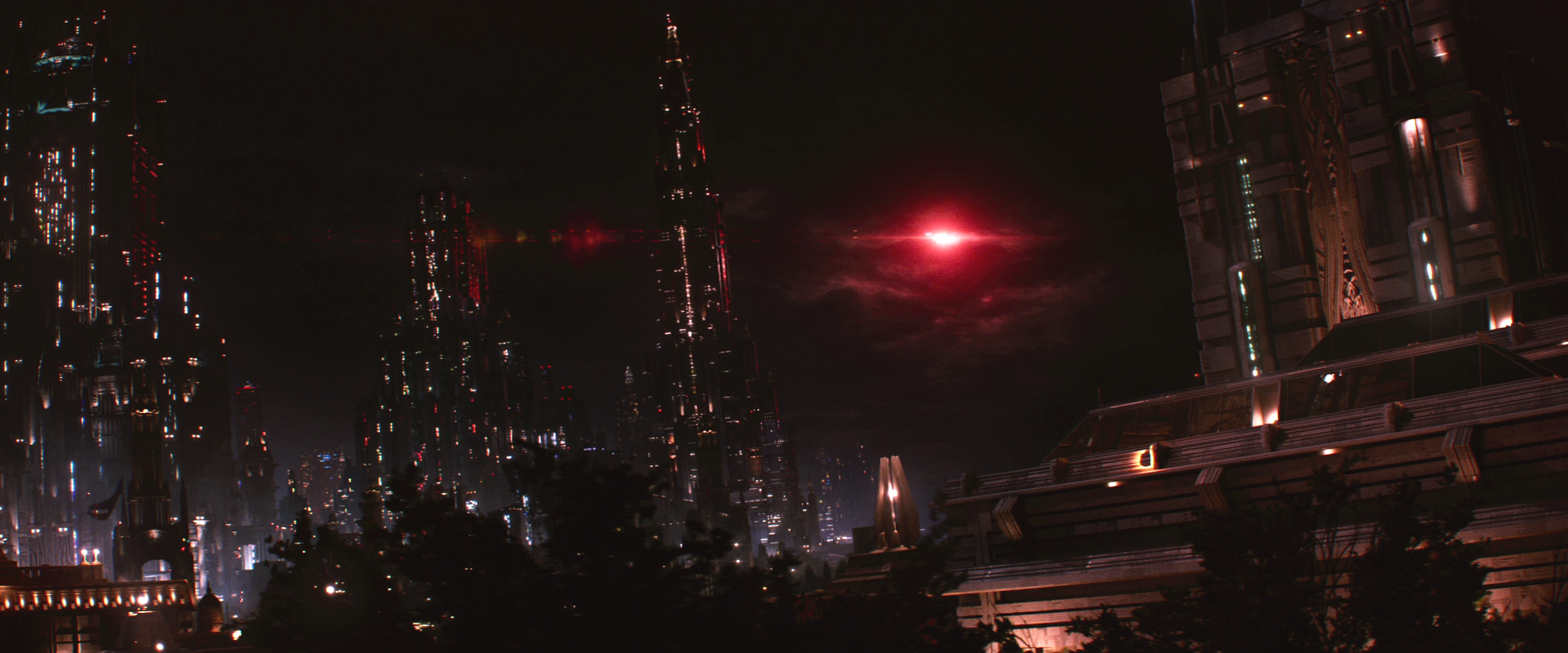
The New Republic capital of Hosnian Prime celebrated the beginning of autumn on Equinox Day.
In contrast to the Empire, the New Republic had a policy of encouraging public celebrations including carnivals, festivals, official revels, and pageants. One known holiday was Liberation Day which was organized to celebrate the liberation of former Rebel prisoners from Ashmead's Lock prison on Kashyyyk. Following the Battle of Jakku, Liberation Day was remade into the seven day Festival of Liberation. Hosnian Prime, the capital of the New Republic, marked the beginning of the autumn season with Equinox Day.
In terms of sports, one popular piloting championship was the Five Sabers, a five-stage race that was held on the planet Theron. The Rebel Alliance veteran and former smuggler Han Solo helped to manage the championship. A junior version called the Junior Sabers was also held for younger pilots like Greer Sonnel. Ubardian oil wrestling was also popular entertainment on some seedy worlds like Sibensko. The Republic abolished the Empire restrictions and censorship over the HoloNet and encouraged the creation of several channels including the Queen of the Core Network to win over the galactic public, with the New Republic having assumed full control of HoloNet by 5 ABY.
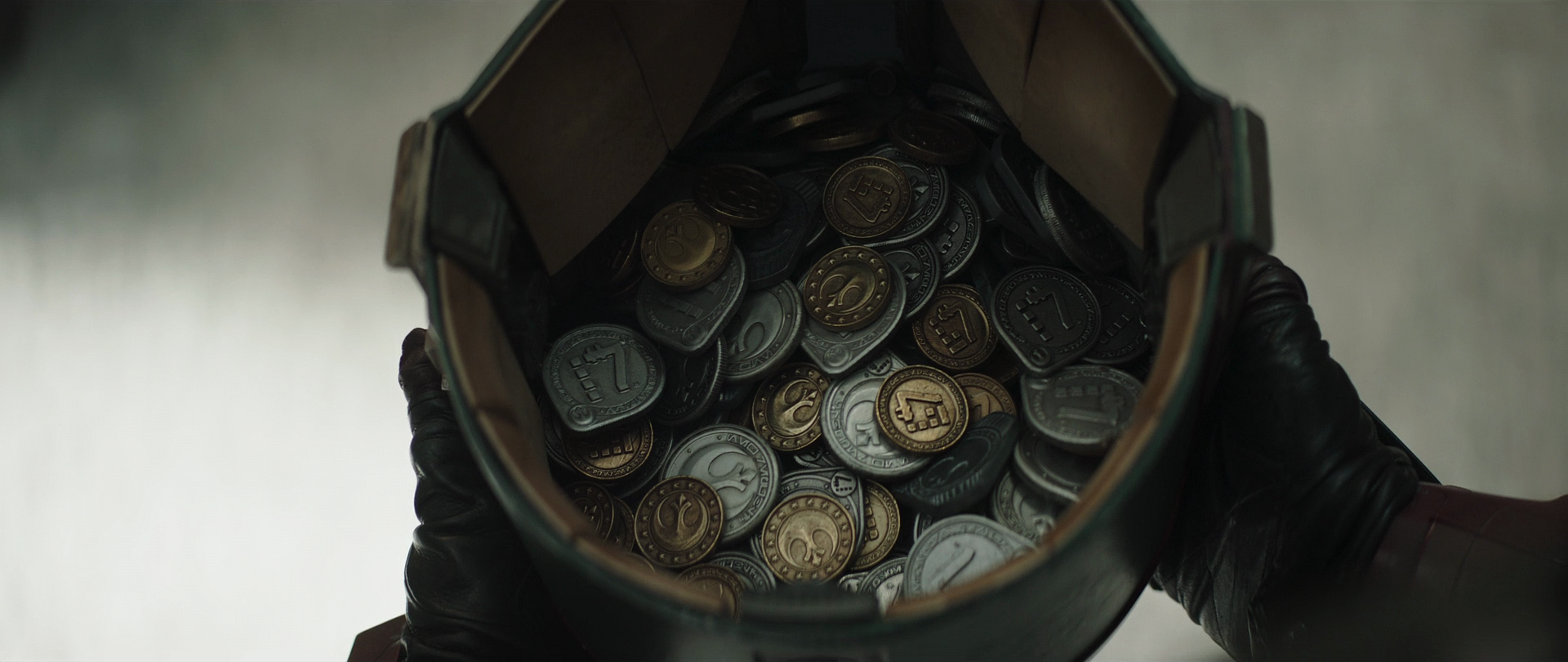
The primary form of currency in the New Republic was the credit.
The New Republic had a galactic-wide economy based on galactic shipping lanes. While its economy was based on free trade and promoting prosperity, the New Republic did not allow the free trade of most forms of spice. However, it allowed the sale and trade of weak forms of spice that could be mined and grown on numerous worlds. The Republic's prohibition on illegal and dangerous forms of spice annoyed crime lords like Rinnrivin Di, who made a living out of trafficking illicit spice.
The New Republic also had a policy of not allowing organized crime syndicates to permeate the galaxy, as they once did during the Age of the Empire. However, deadlock in the Galactic Senate prevented the Republic from fulfilling this promise. By the time of the Napkin Bombing, some locations, like the space station Chrome Citadel and the Expansion Region planet of Sibensko were regarded as crime havens where various illegal activities, including slavery and the trafficking of Glitterstim and weapons took place. While the Republic also had financial regulations aimed at tackling organized crime, these were sporadically enforced by the time of the Napkin Bombing.

The New Republic was located throughout the known galaxy, but was only a fraction of the size of the Galactic Republic and the Galactic Empire.
Towards the end of the Galactic Civil War, the New Republic had established themselves on the planet of Chandrila and also it's sector. They also took over many Imperial worlds such as Kuat, Arkanis, Andara, and Akiva. By the end of war, the New Republic absorbed much of Imperial Space while parts of the Core, Colonies, and Inner Rim became part of an Imperial Remnant which remained peaceful to the New Republic. However this imperial remnant would eventually collapse and it's members such as Commenor became part of the New Republic.
Thirty years after the Battle of Endor, the New Republic occupied vast swaths of space stretching from the Inner Core to the Outer Rim Territories, and at that time had its rotating capital on the Core World of Hosnian Prime. While a fraction the size of both the Galactic Republic and Empire, its egalitarian practices left many neighboring star systems on friendly terms with the new government. Some known Republic worlds included Chandrila, Akiva, Coruscant, Taris, Naboo, Hevurion, Mirrin Prime, Arkanis, Kuat, Sullust, and Daxam IV. After the First Order's secession from the Republic, a narrow region of space existed as a neutral region of systems known as the Trans-Hydian Borderlands, in which an act of aggression within would be viewed as an overt act of war. Despite this, the First Order Navy frequently crossed the Borderlands and penetrated New Republic space, which led to incidents like the Suraz engagement. In spite of these violations of the Galactic Concordance, the New Republic refused to take action against the First Order beyond issuing formal diplomatic protests.
In the new Star Wars canon, the New Republic first appeared in the novels Aftermath and Lost Stars by Chuck Wendig and Claudia Gray respectively. The New Republic was originally created for Star Wars Legends where it first appeared in the 1991 novel Heir to the Empire by Timothy Zahn. The idea of rebuilding the Galactic Republic which was mentioned as part of the Star Wars original trilogy's backstory traces back from George Lucas' early comments about at that time unplanned sequel trilogy in 1980, after the release of Star Wars: Episode V The Empire Strikes Back.
In the 2014 canon mobile game Star Wars: Galactic Defense, Tarfful can be seen yelling "hnn-rowr yrroonn nng rarr"—text that first appeared in the Legends comic Star Wars: Empire's End and meant "Long live the New Republic," when translated from Shyriiwook. However, Galactic Defense takes place during the time when the Galactic Republic was still standing and long before the New Republic arose. As such, this article assumes that the line has a different meaning in new canon media.
During the development of Bloodline by Claudia Gray, various elements of the New Republic, such as the Centrist and Populist political factions, originated with Rian Johnson, the director of Star Wars: Episode VIII The Last Jedi.
- LEGO Star Wars: Droid Tales — "Exit from Endor"
- Star Wars: Trials on Tatooine
- LEGO STAR WARS: Celebrate the Season — "Gifting With Grogu"
- LEGO Star Wars: All-Stars — "The Power at Jakku"
- LEGO Star Wars: The Force Awakens
- LEGO Star Wars: The Skywalker Saga
- Star Wars: Visions — "THE TWINS"